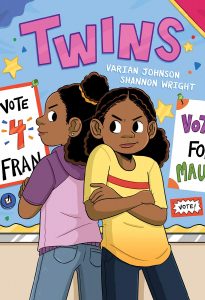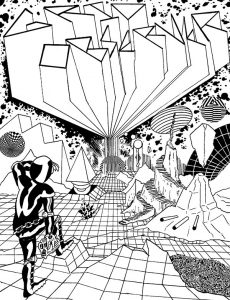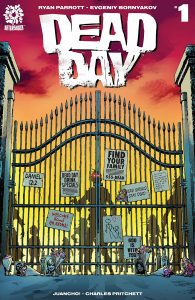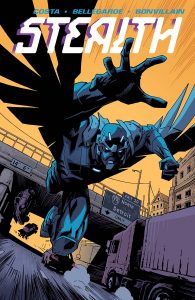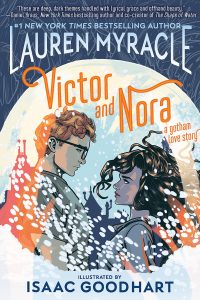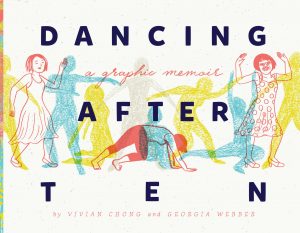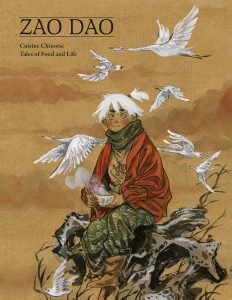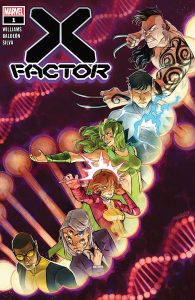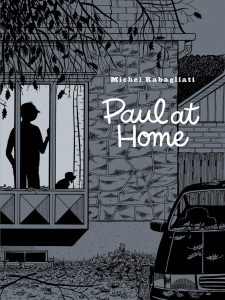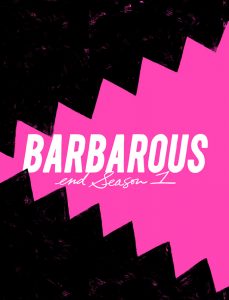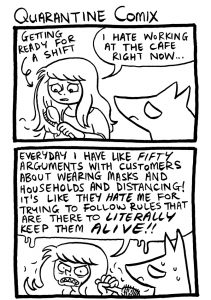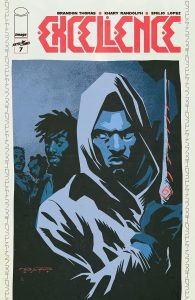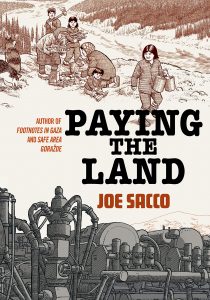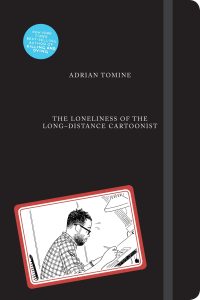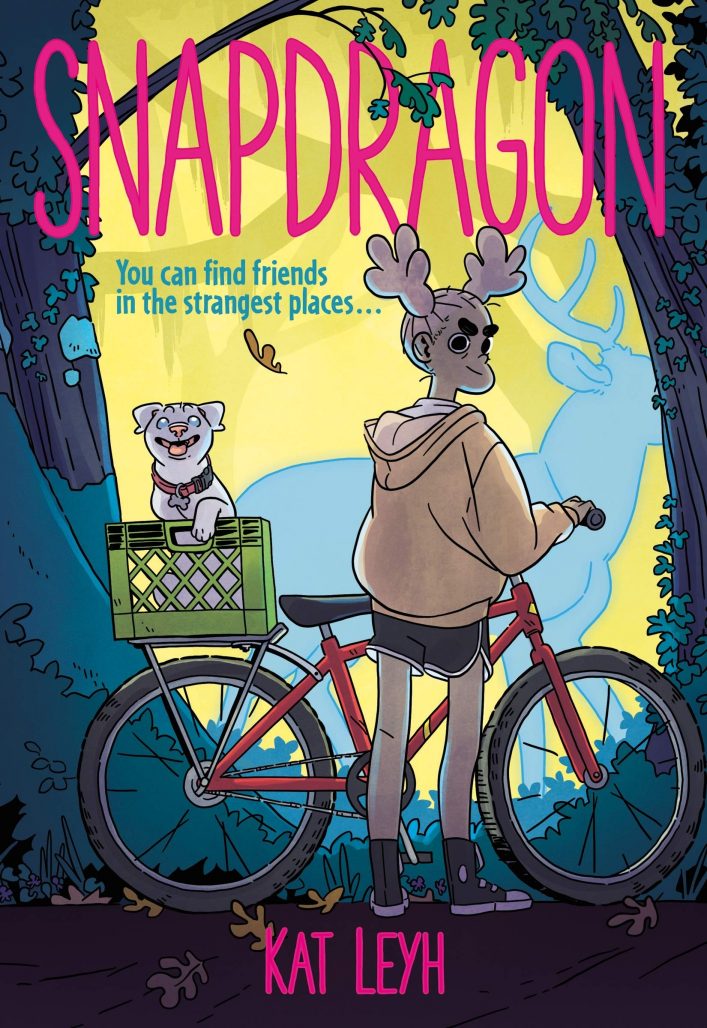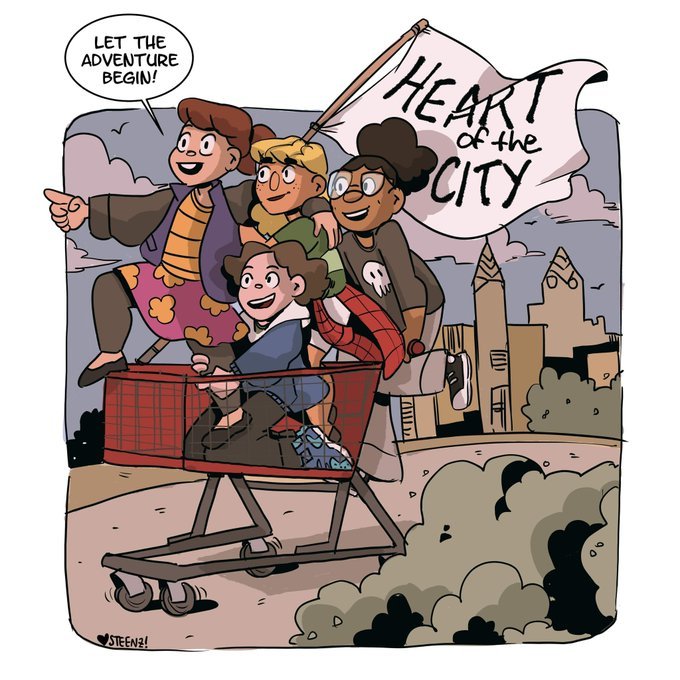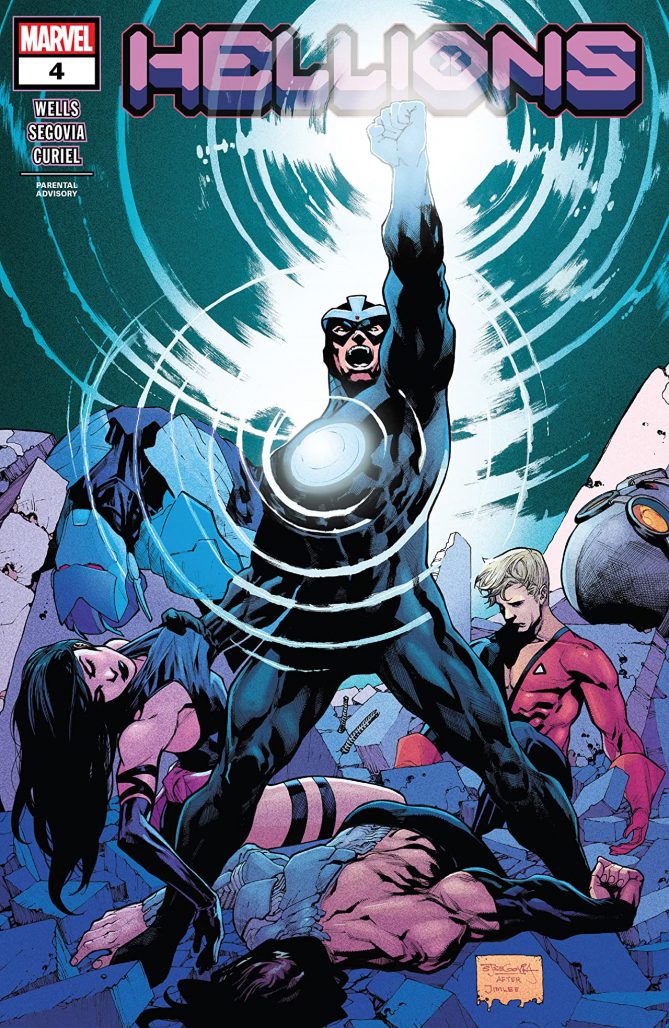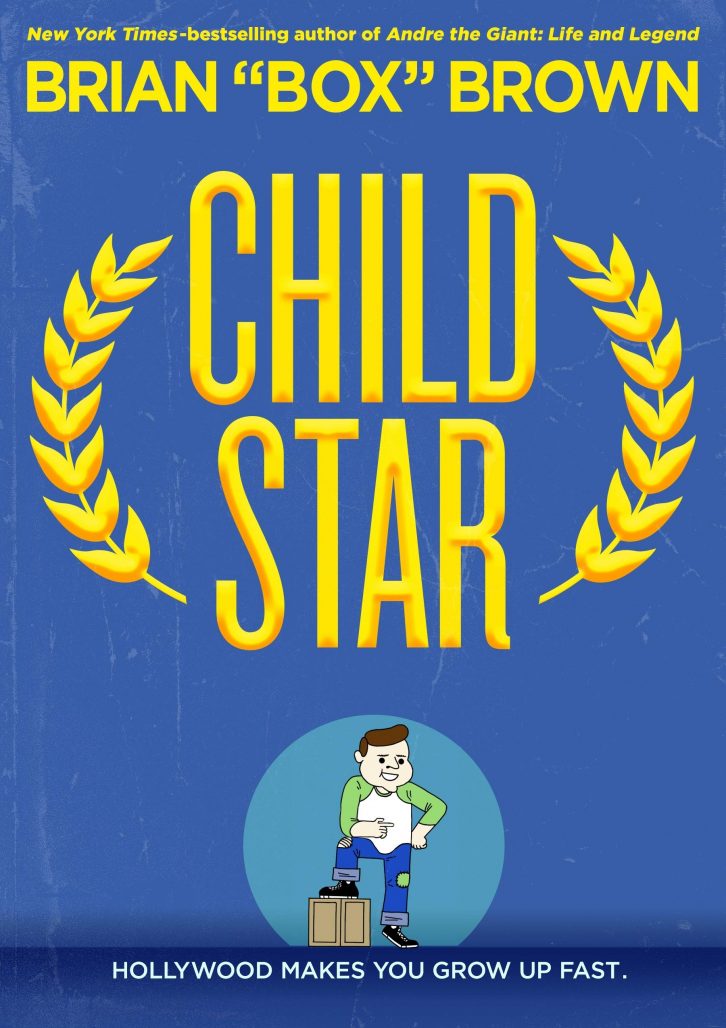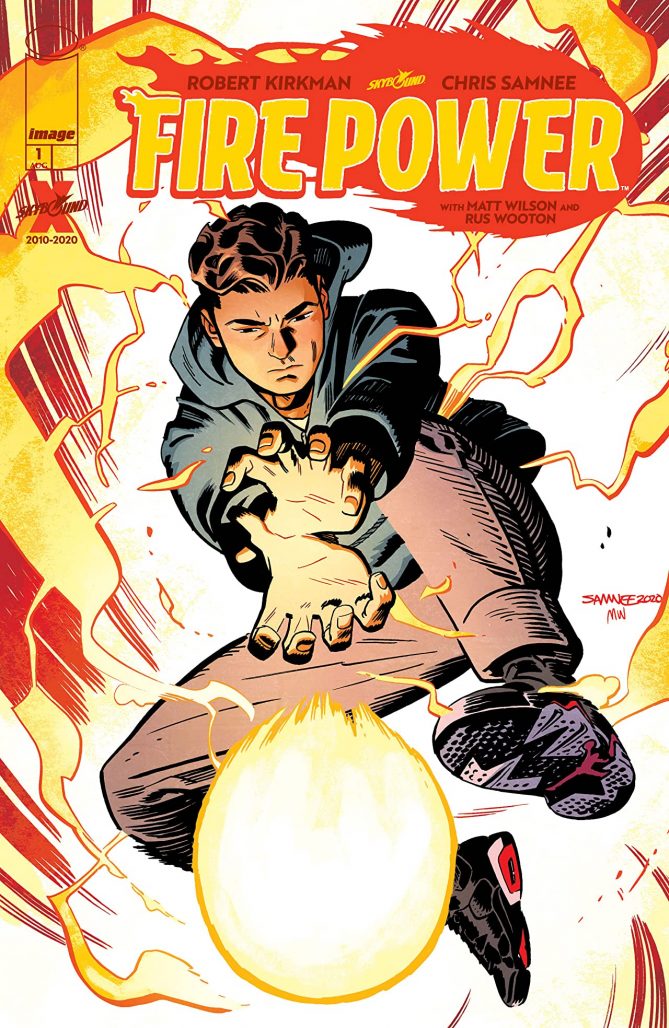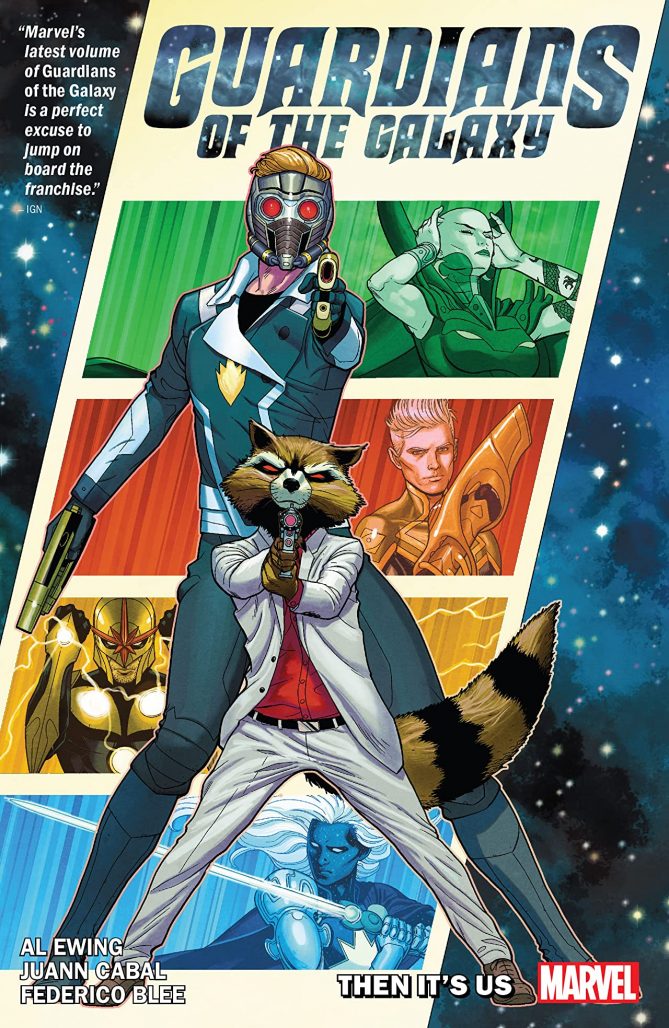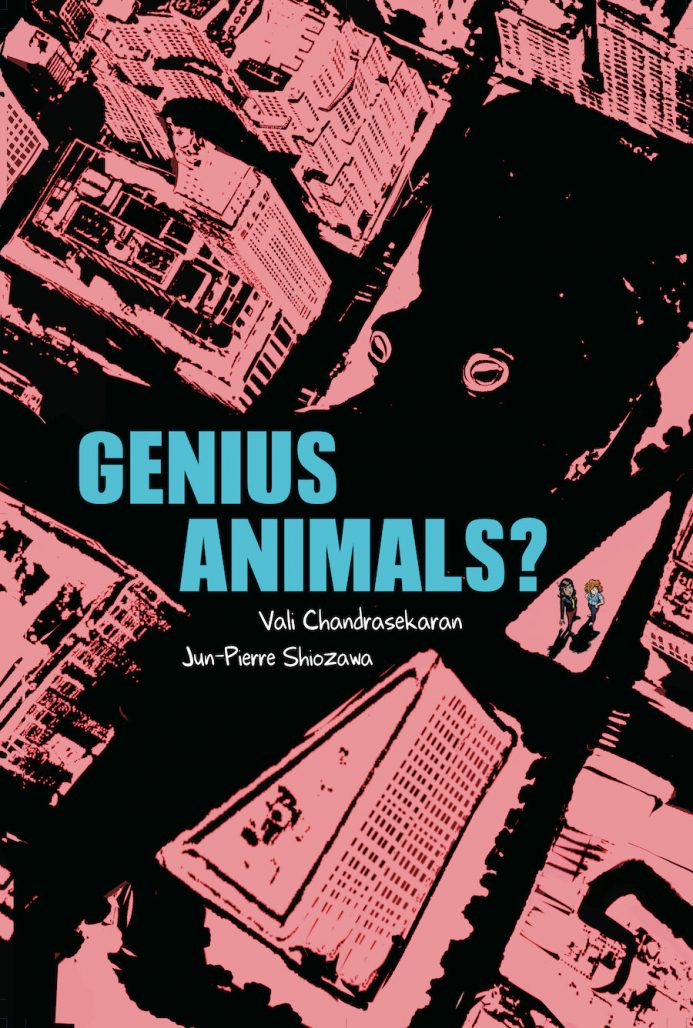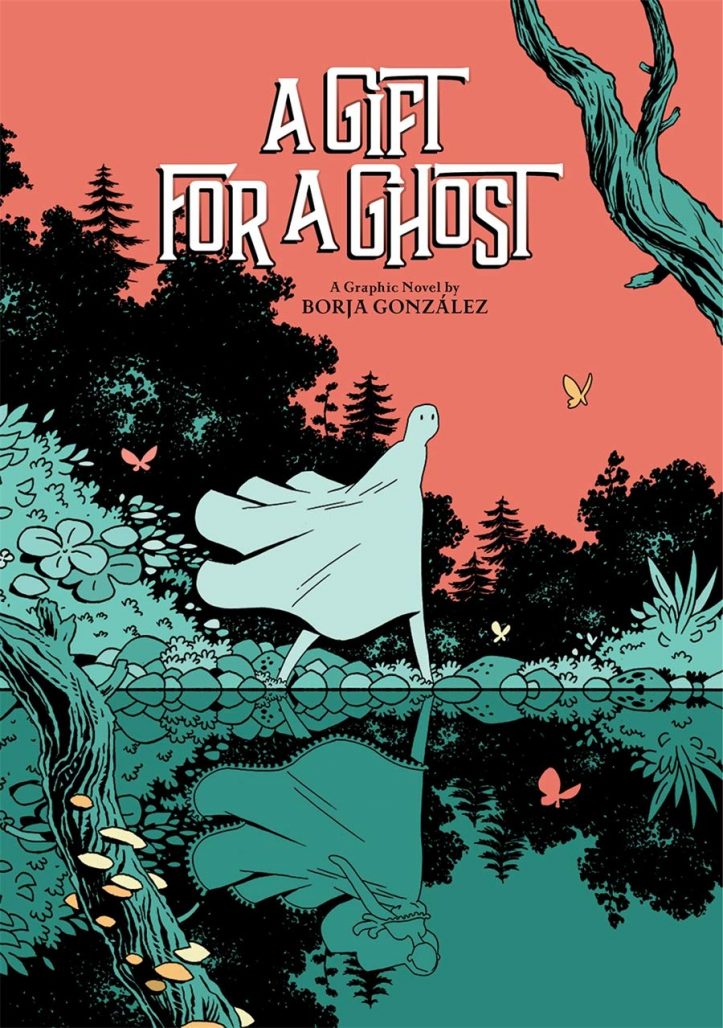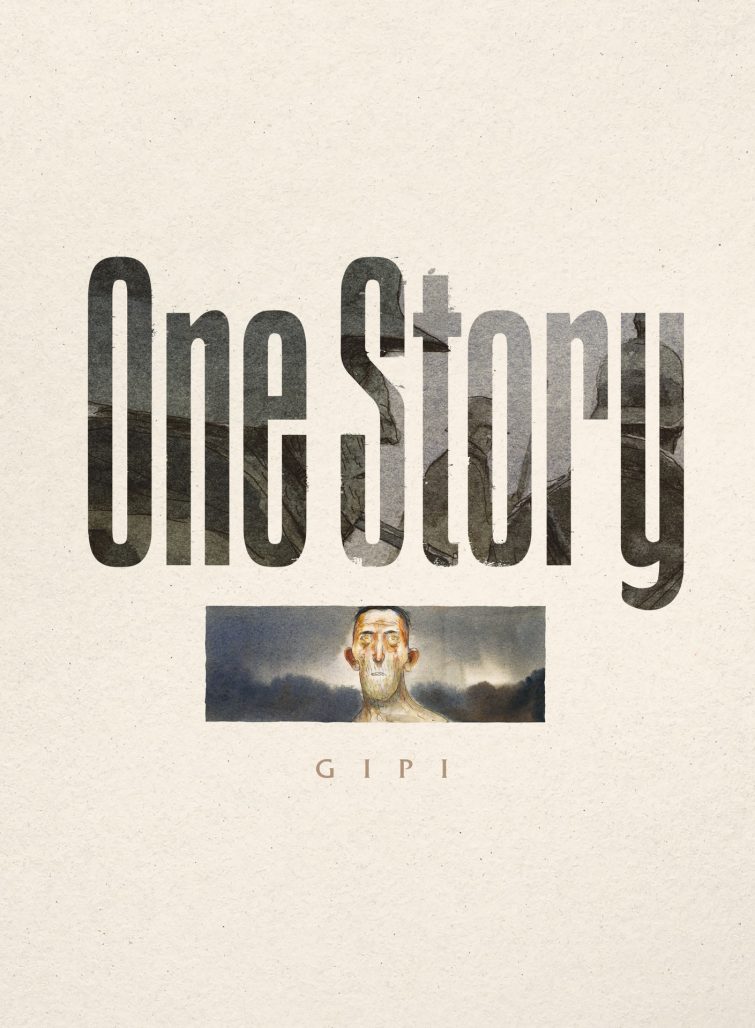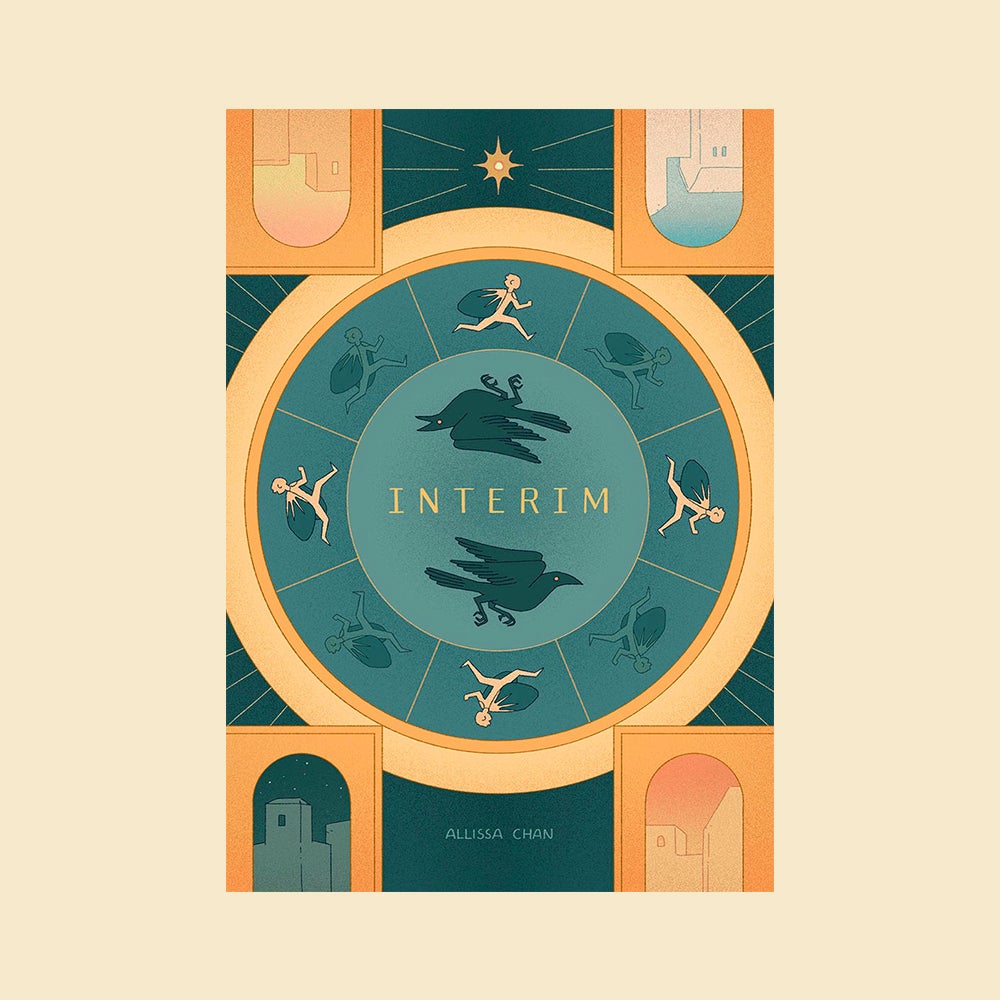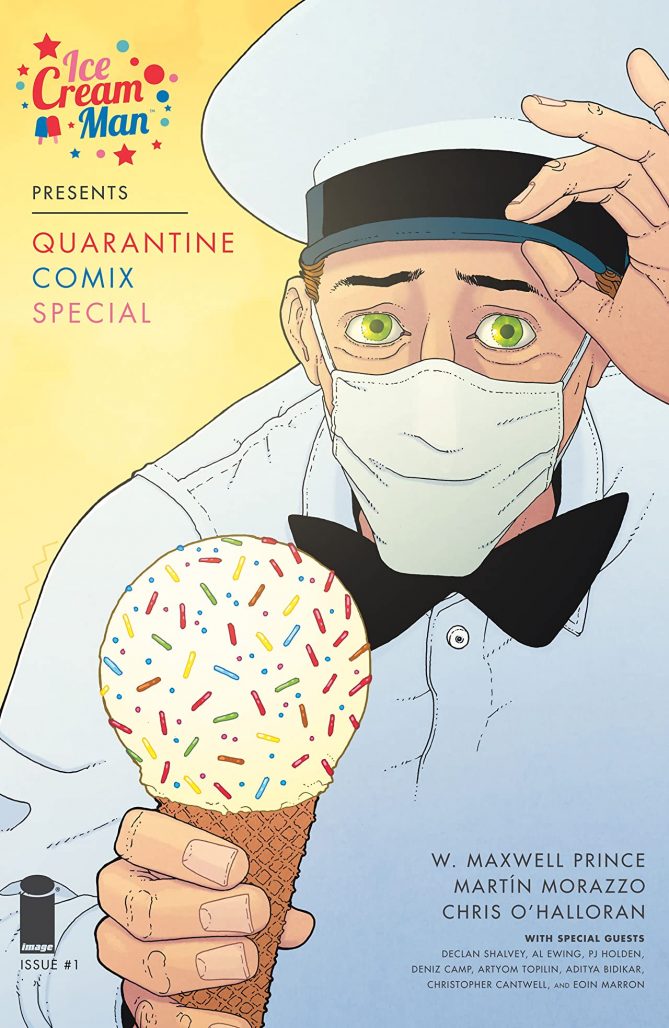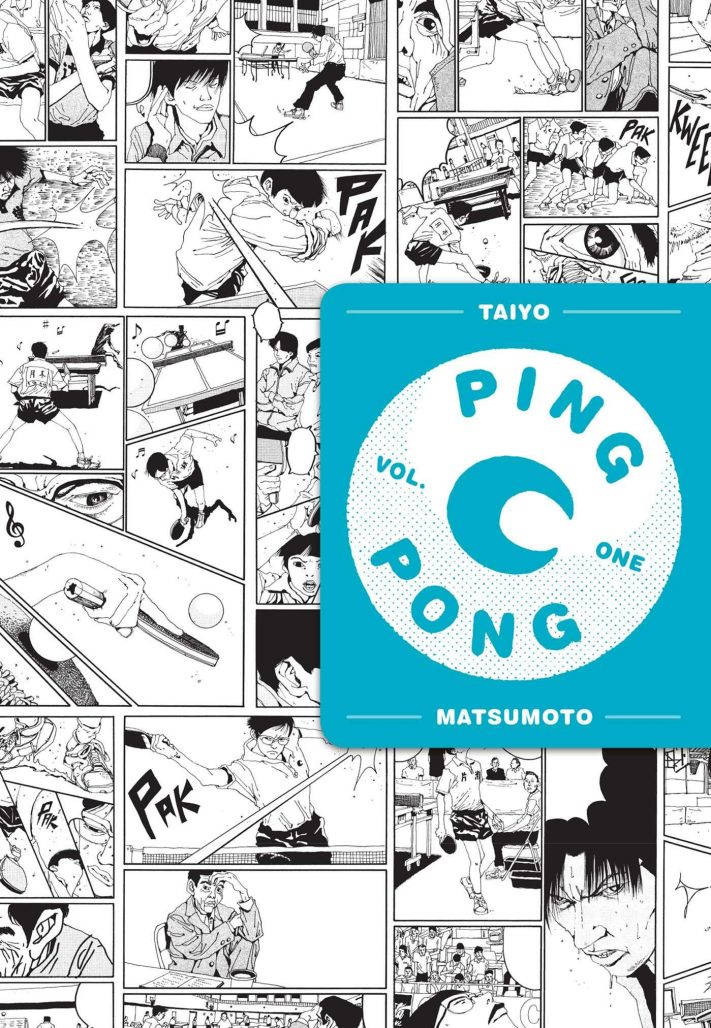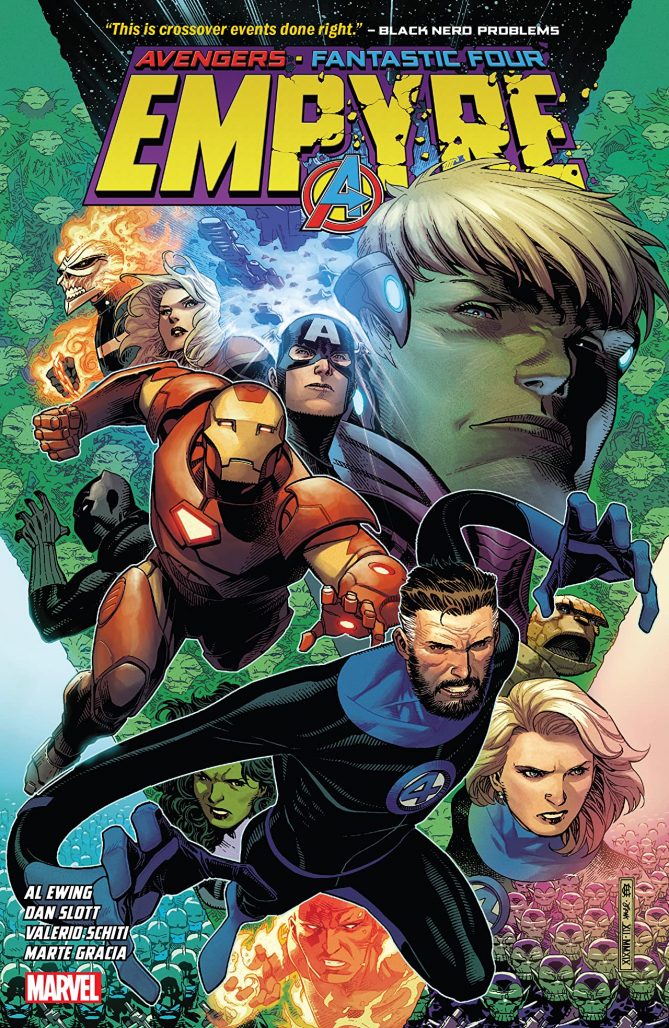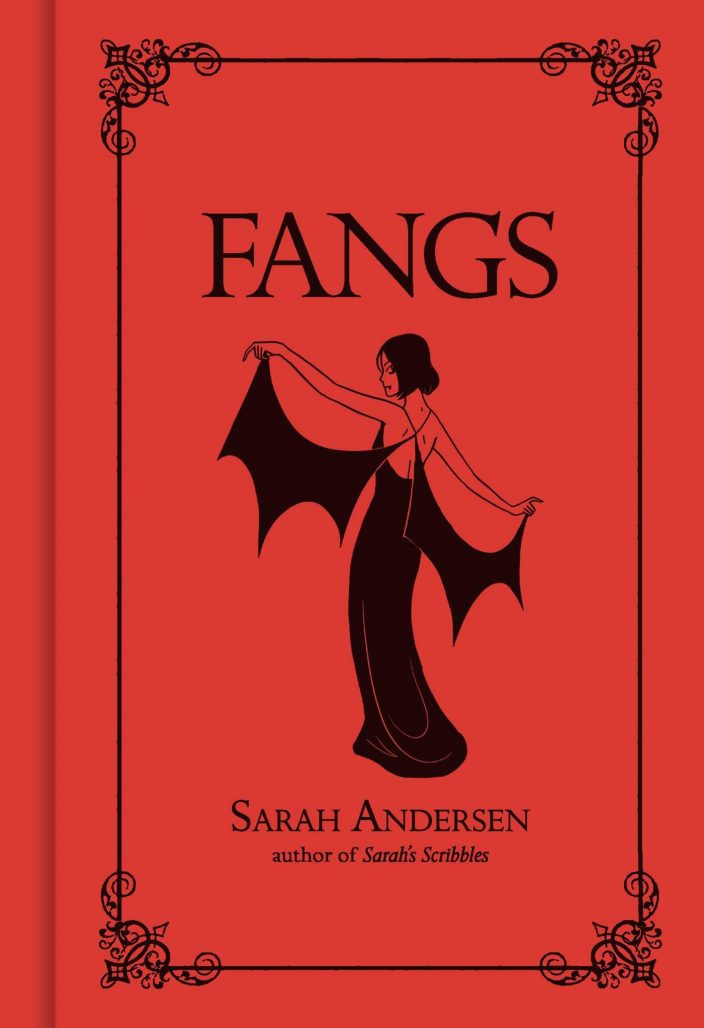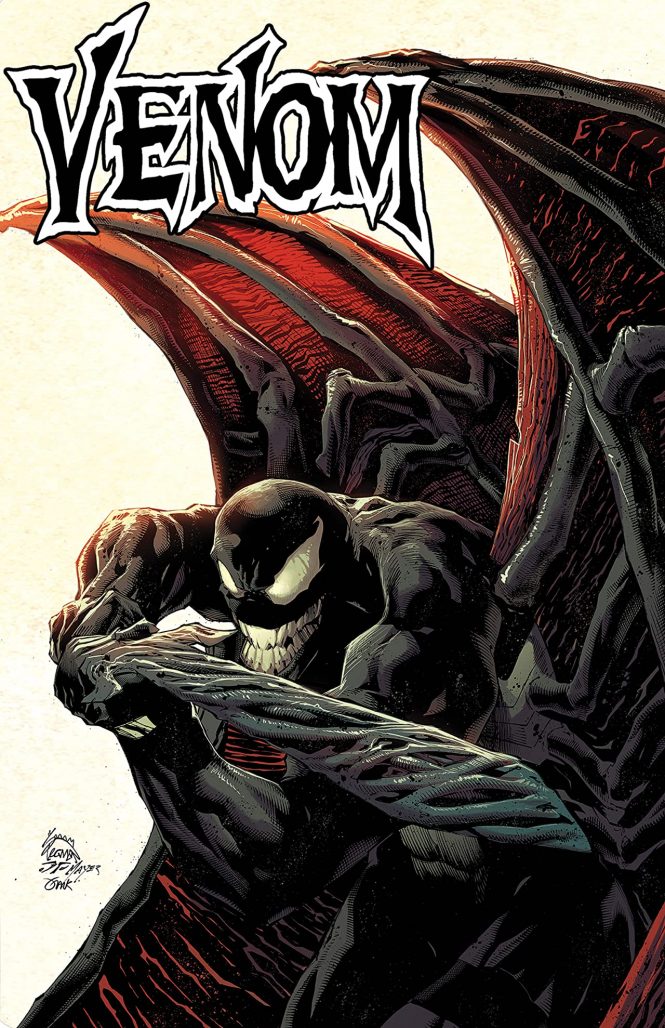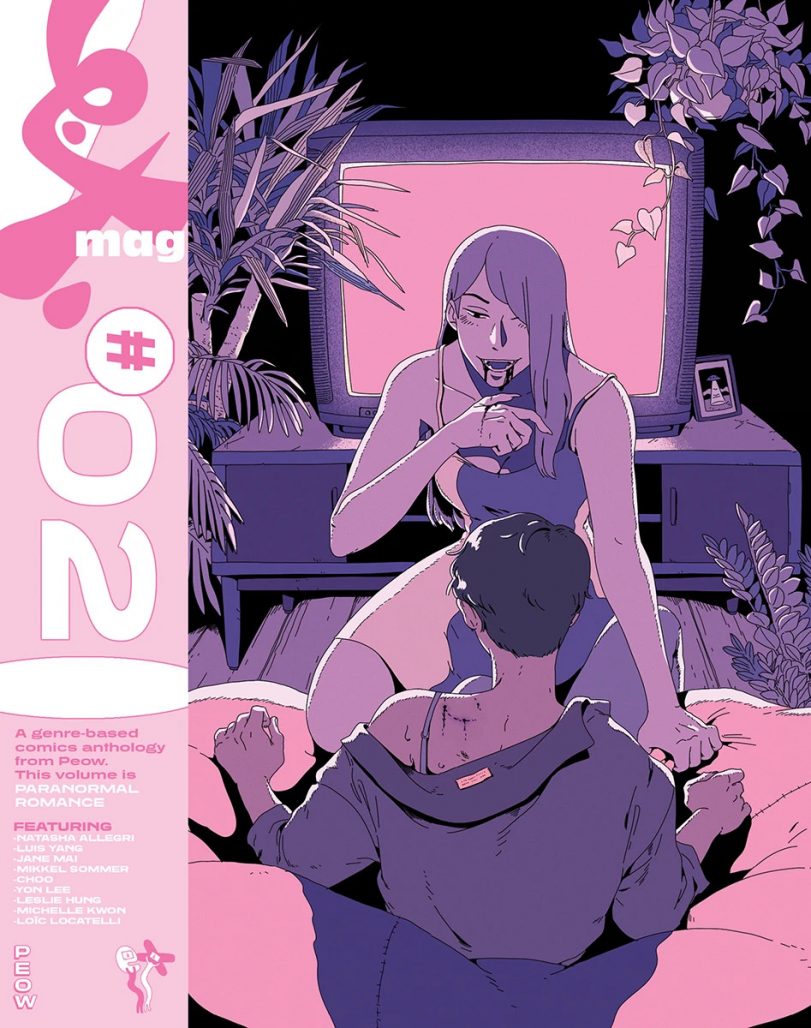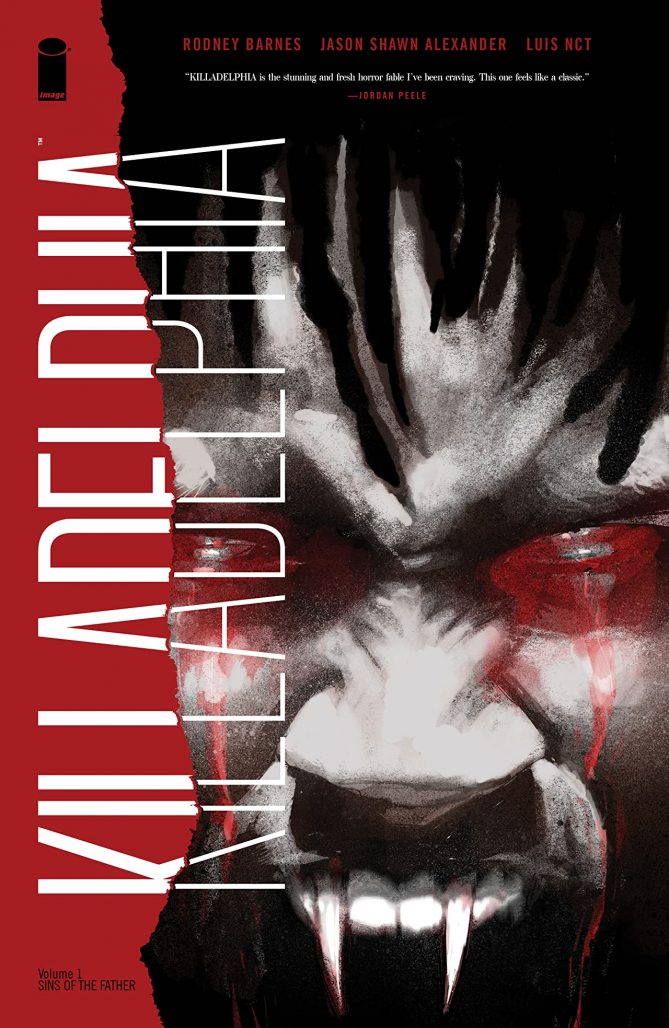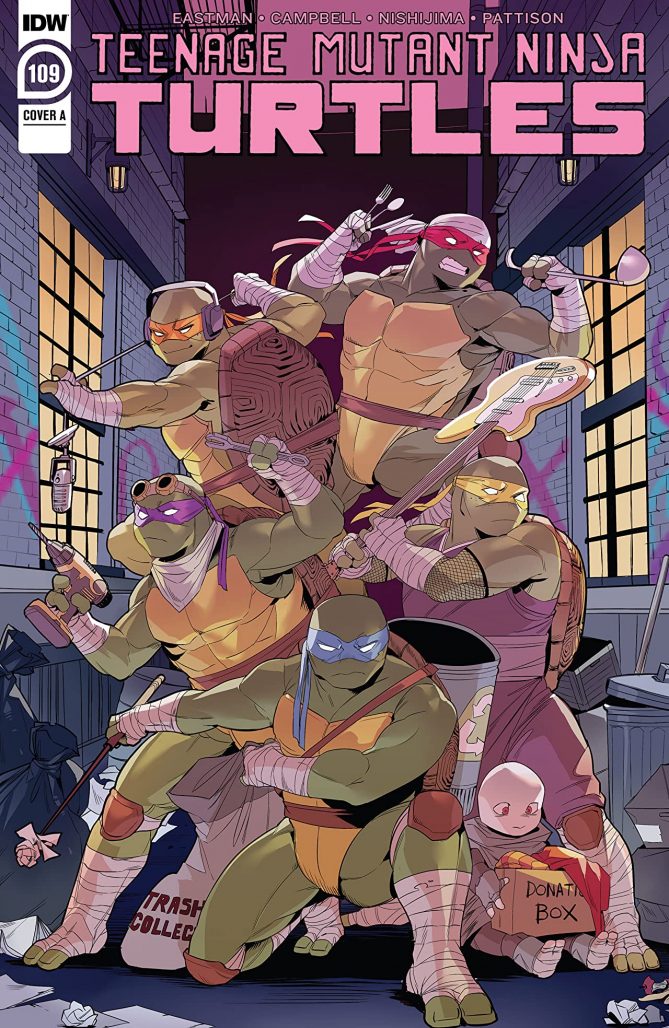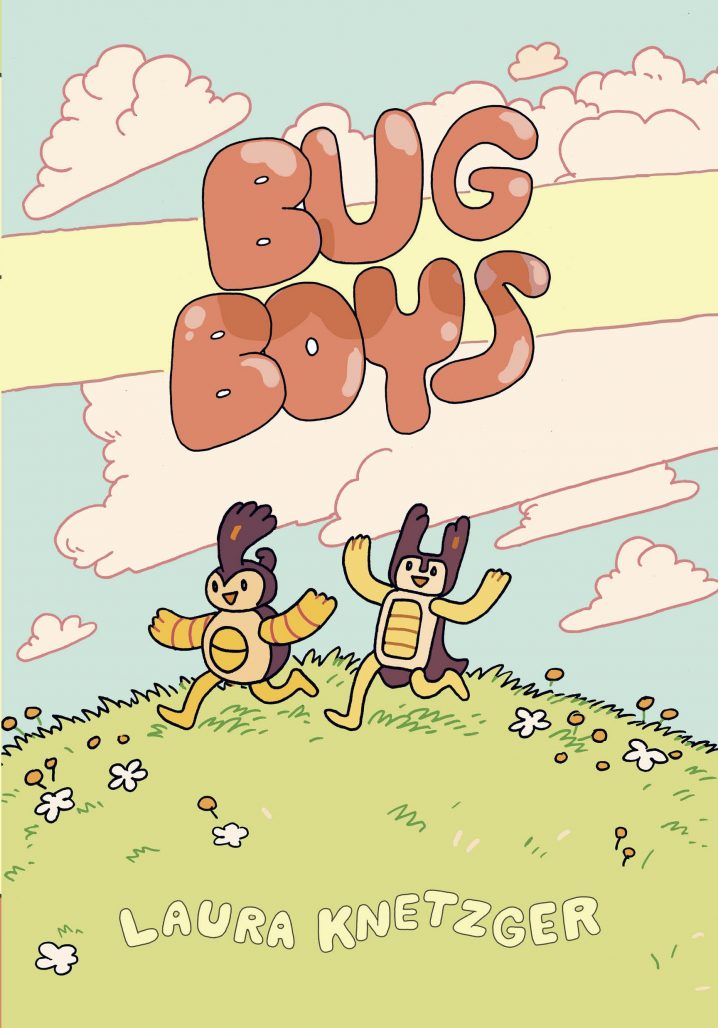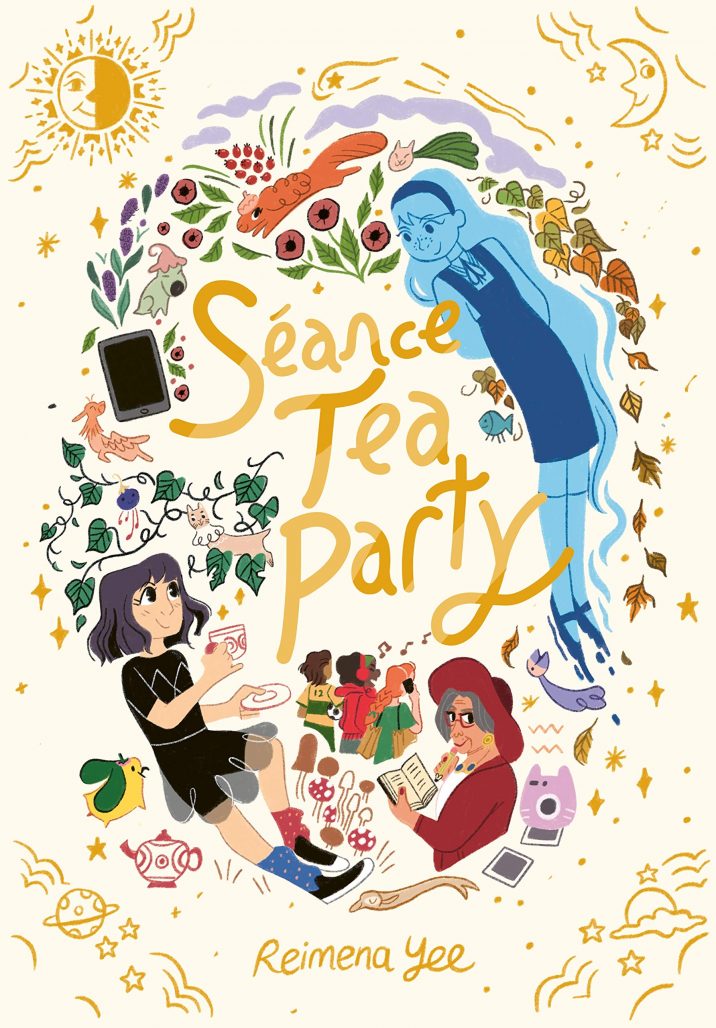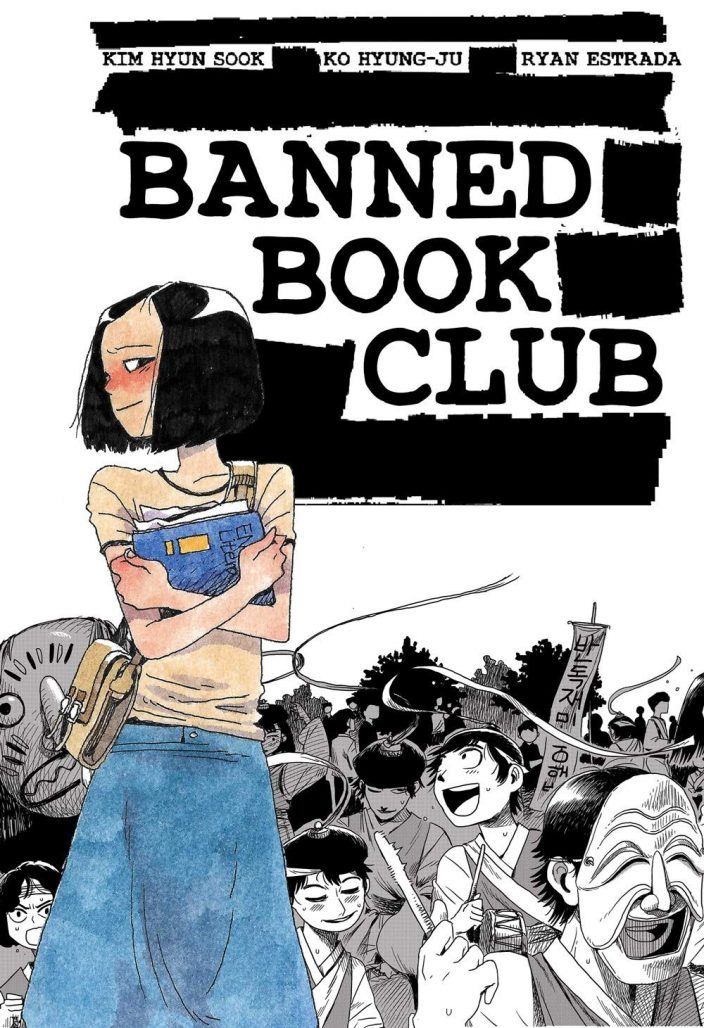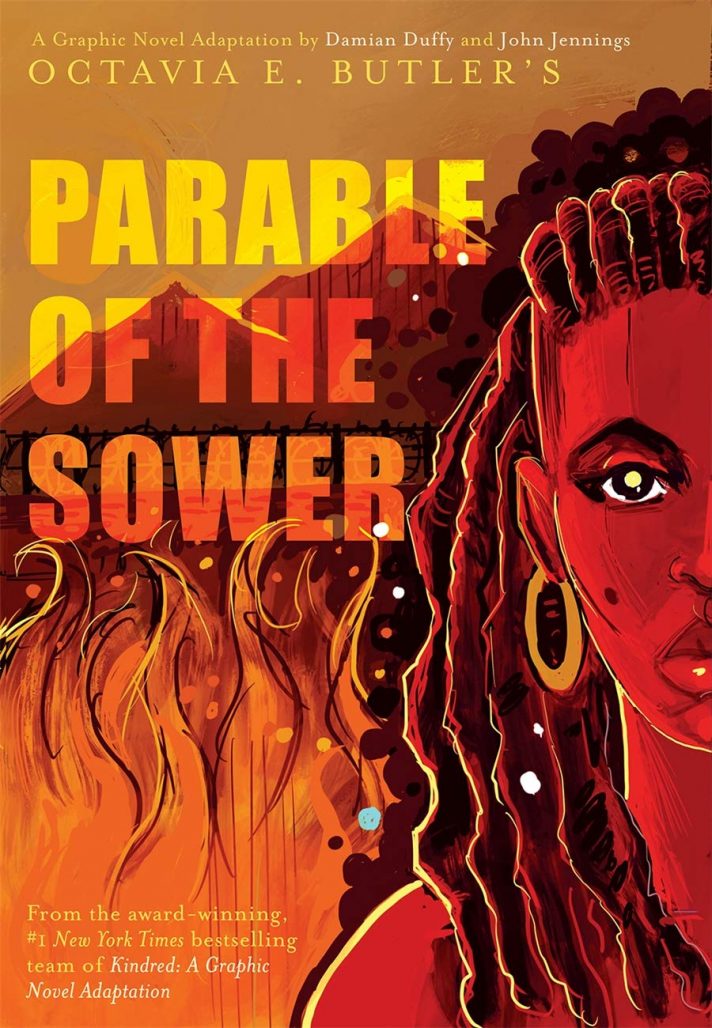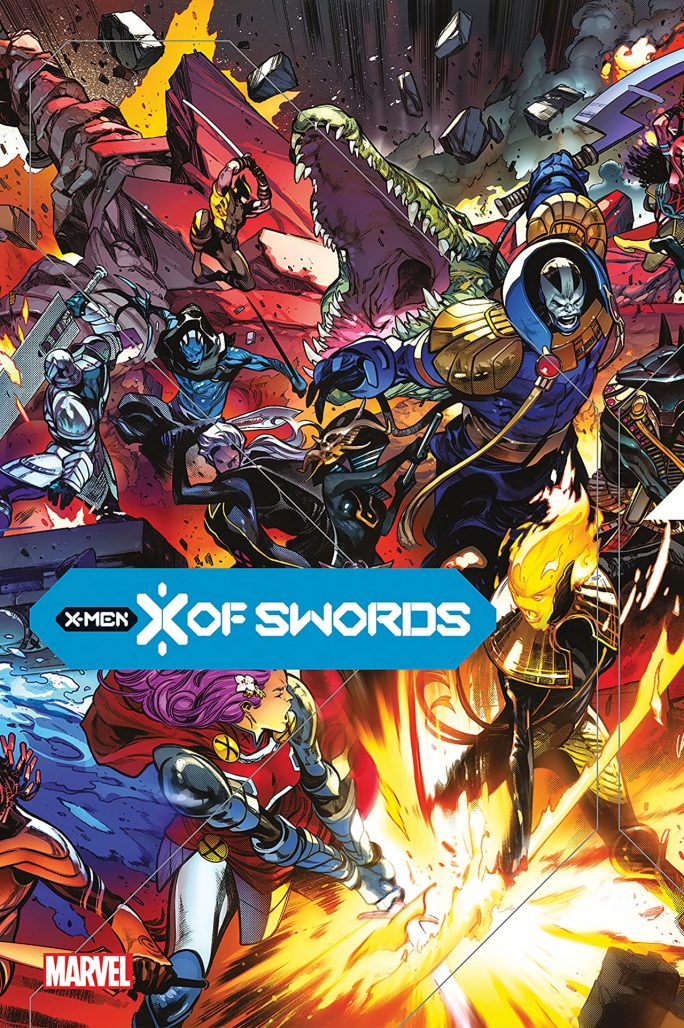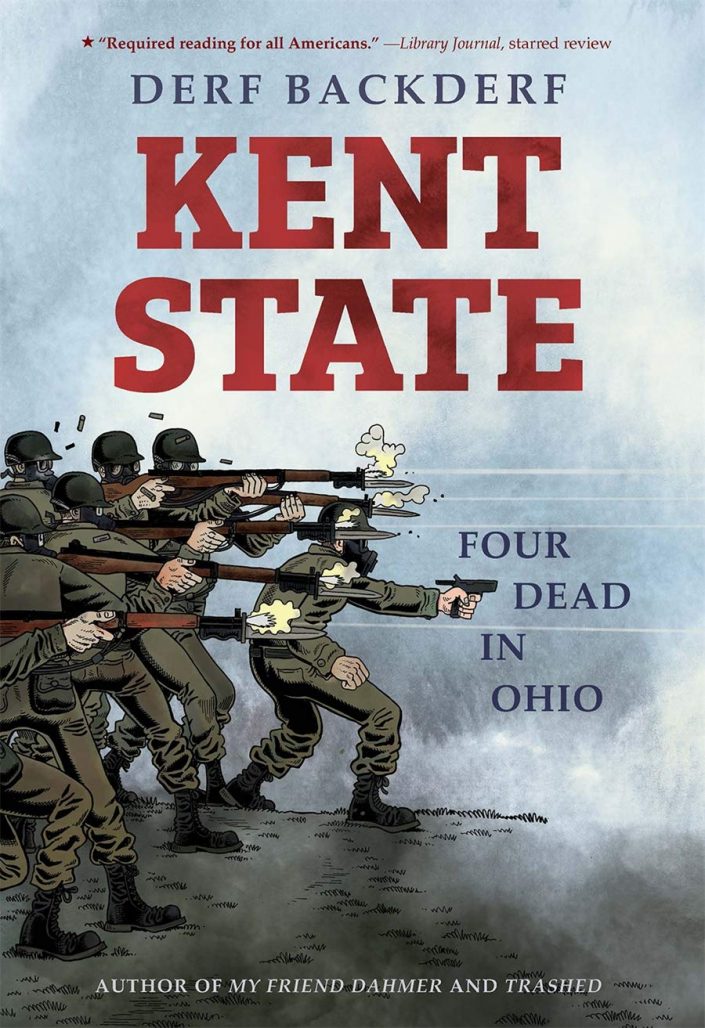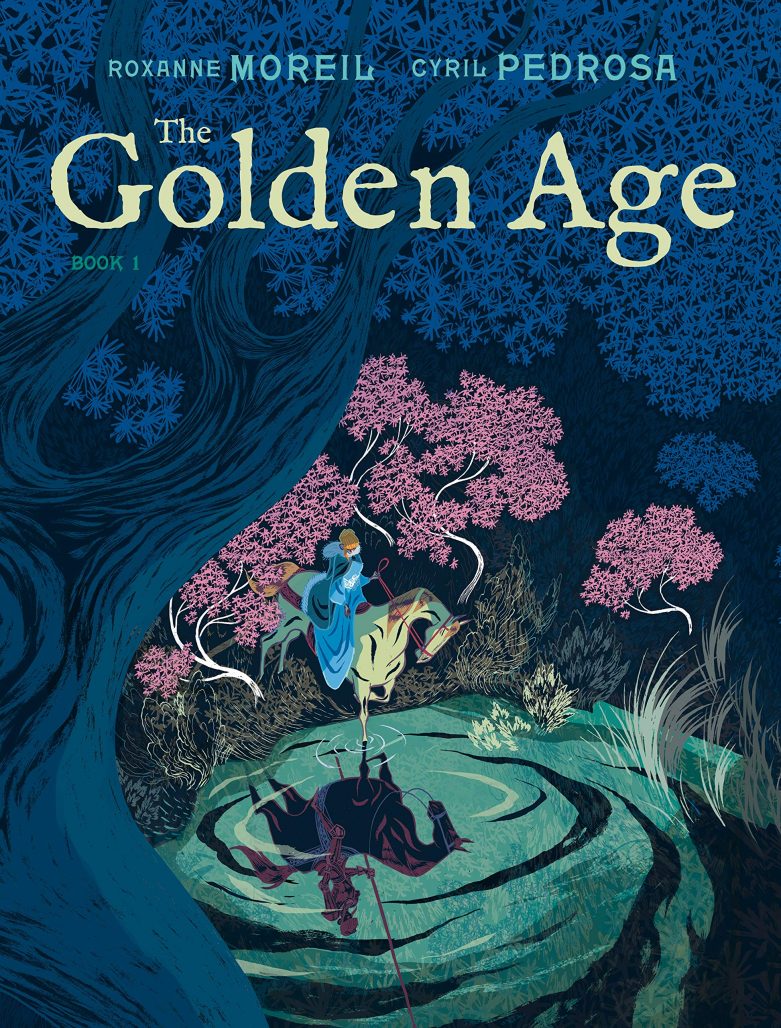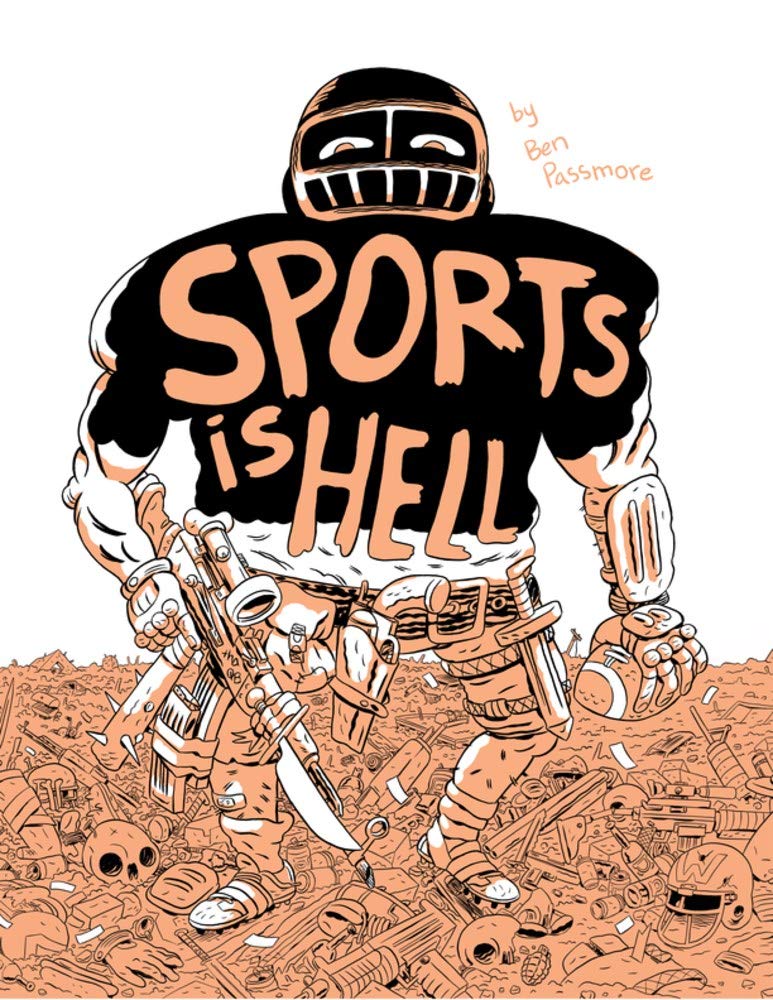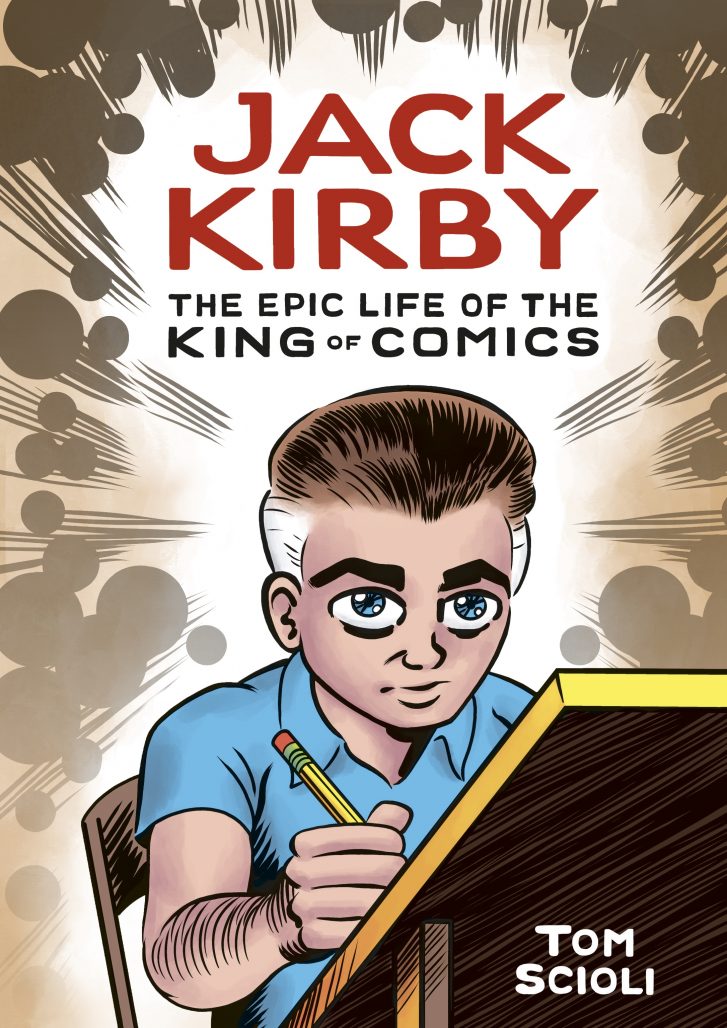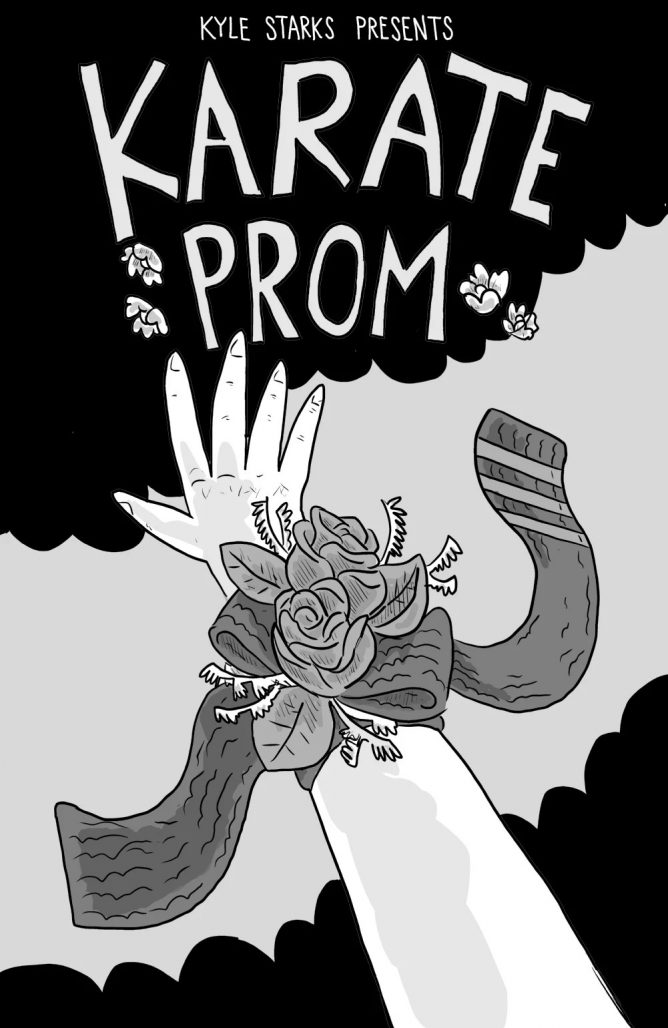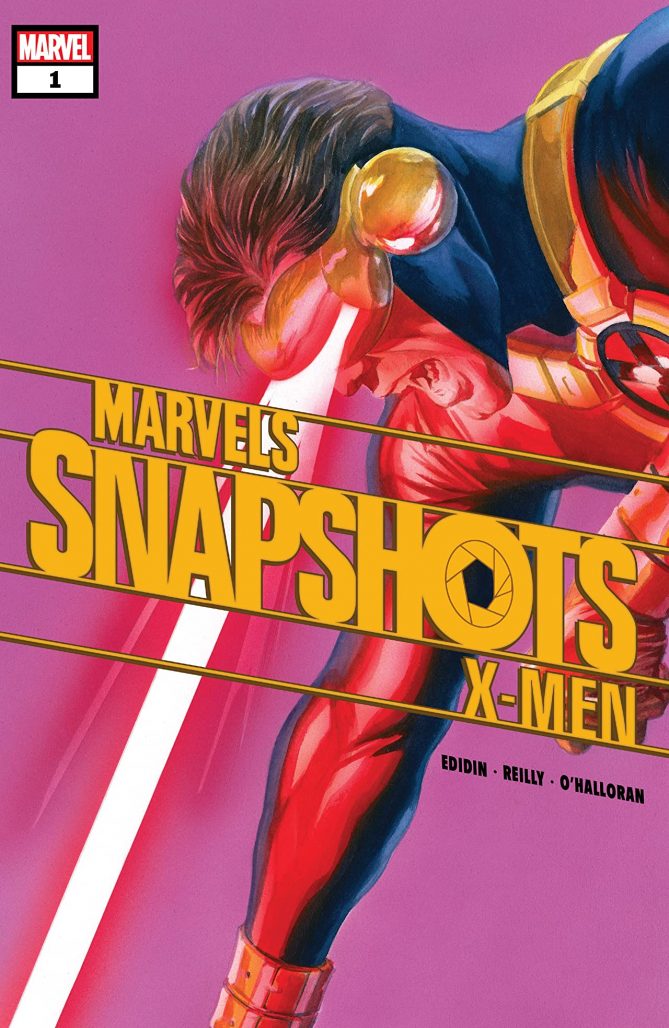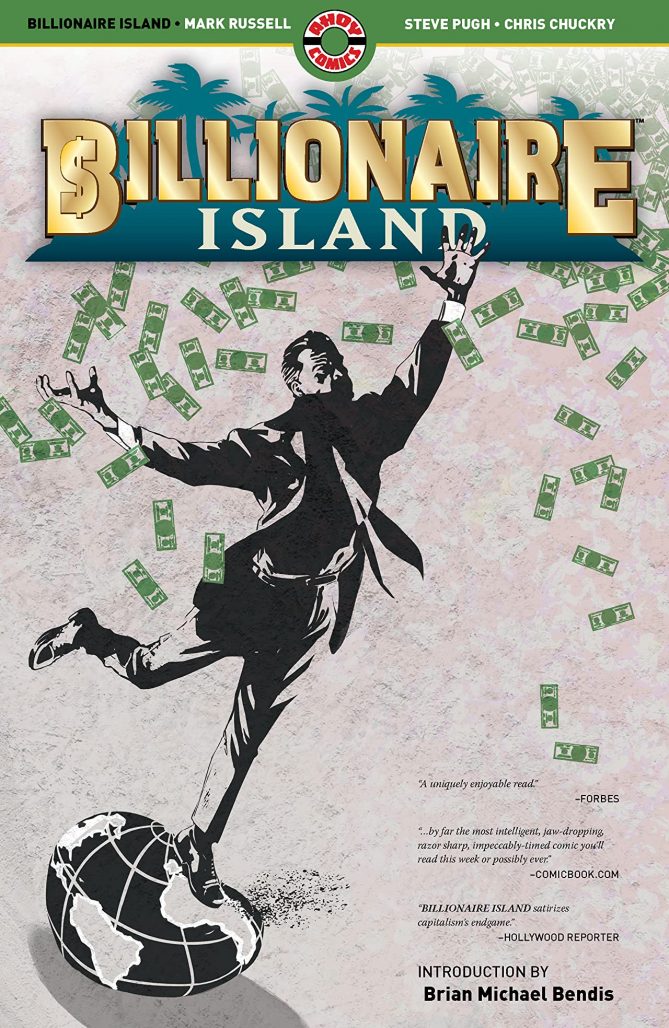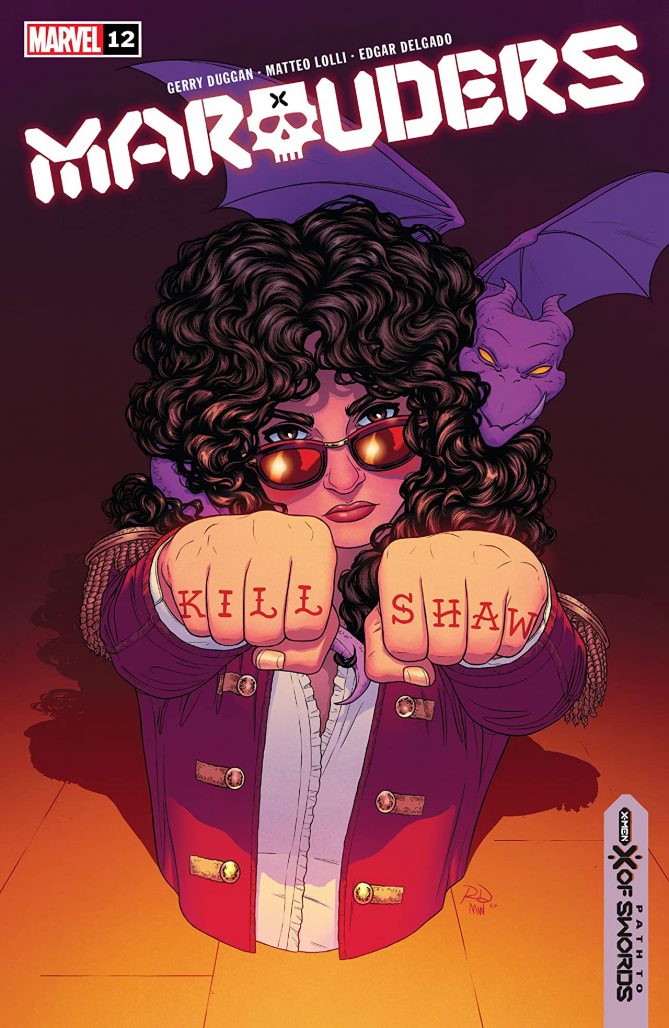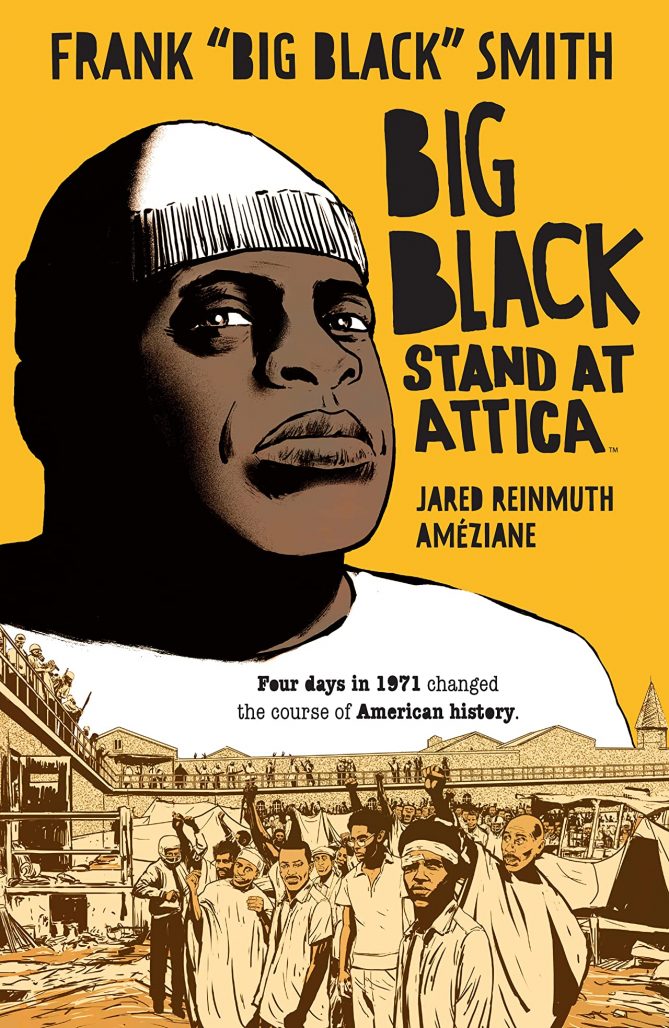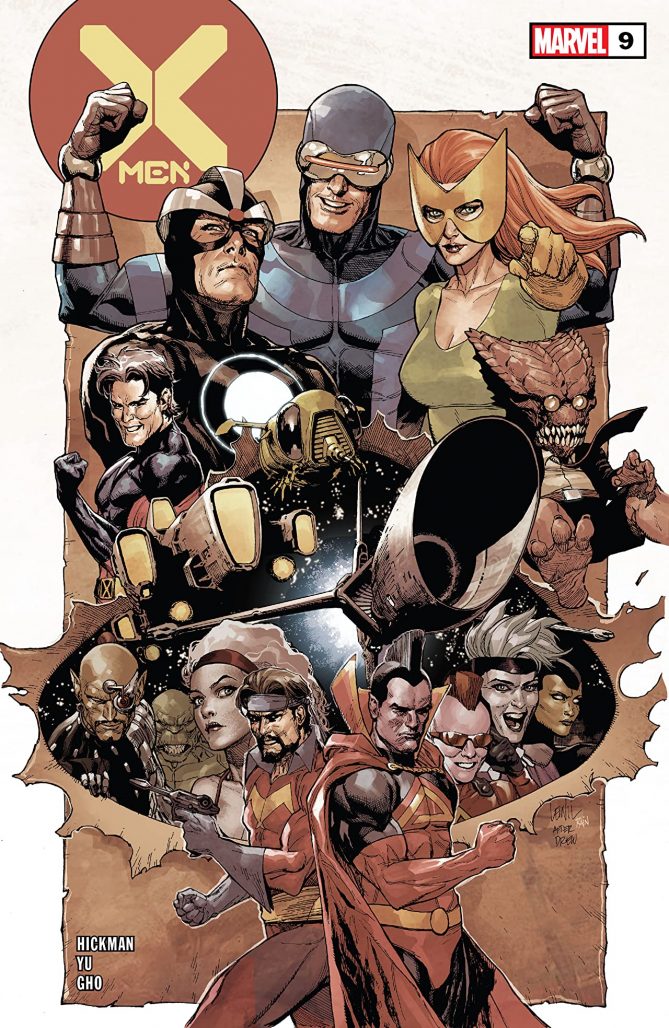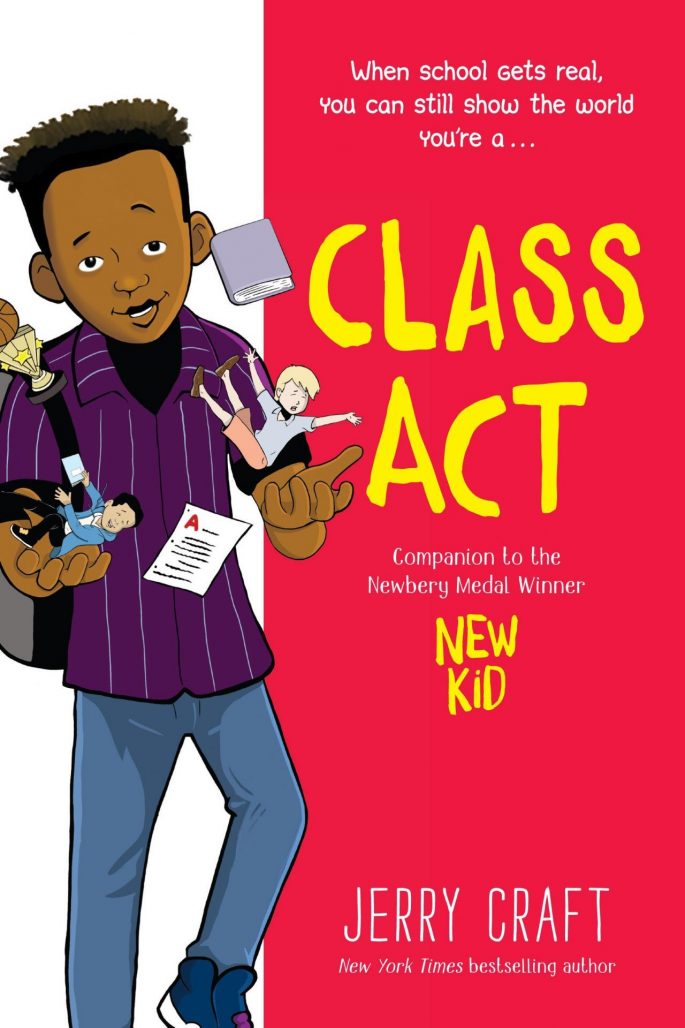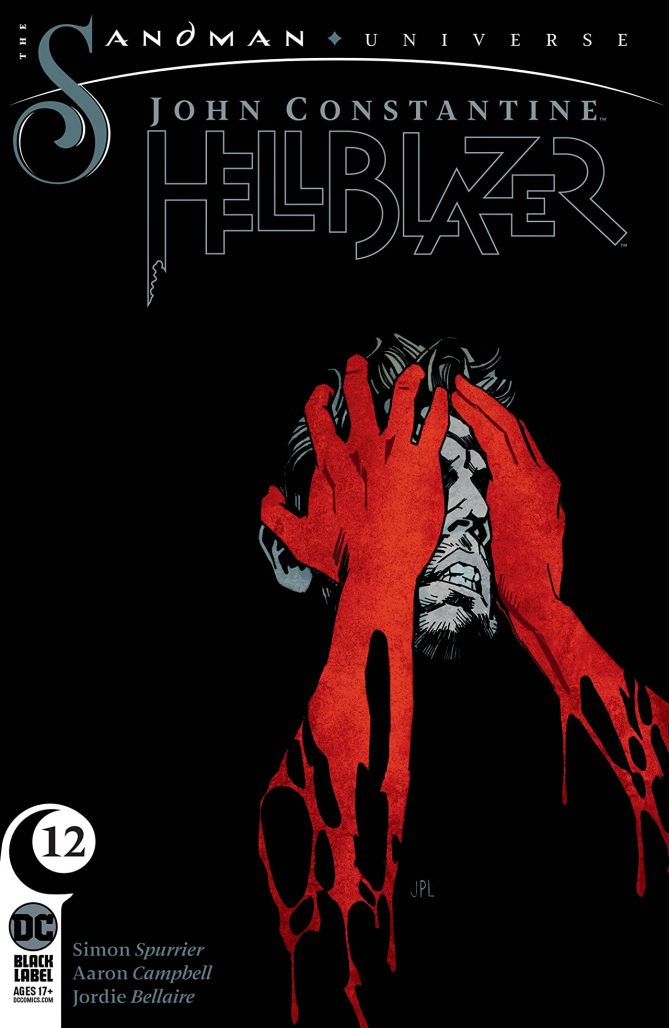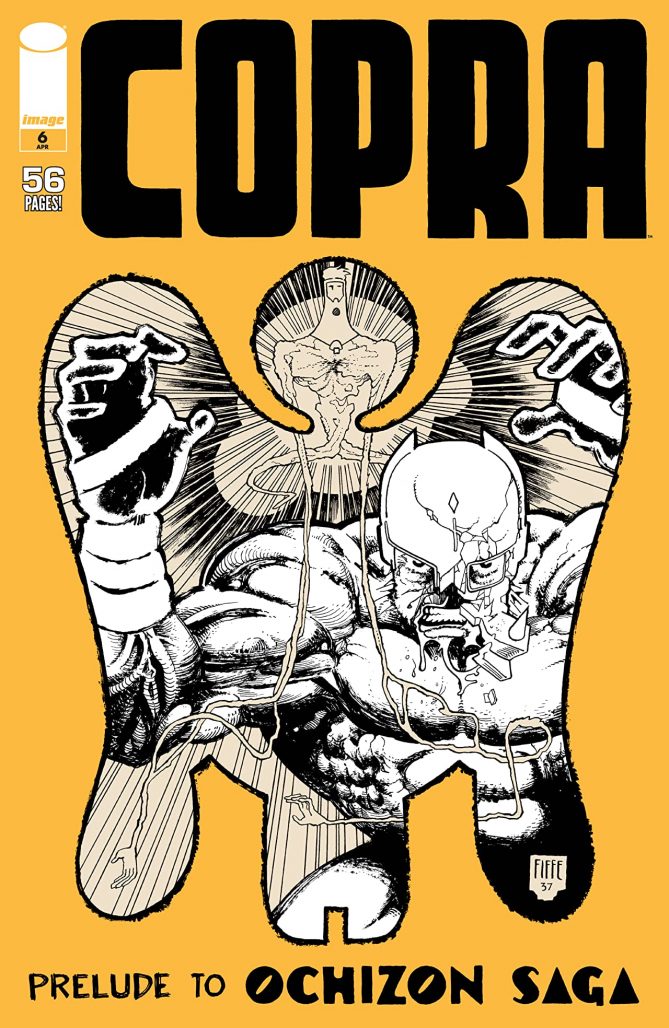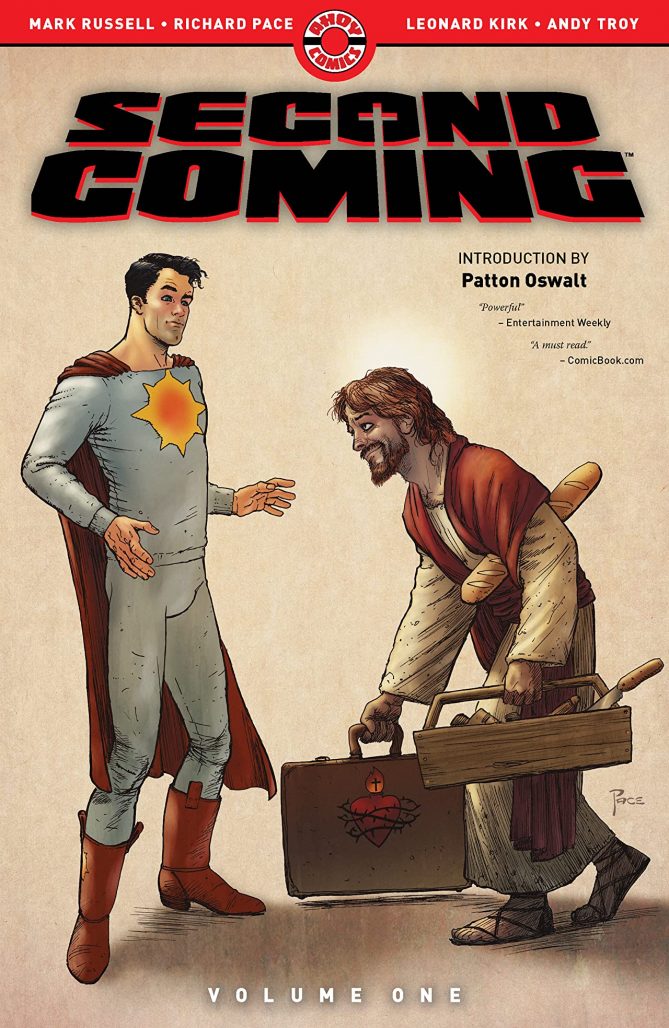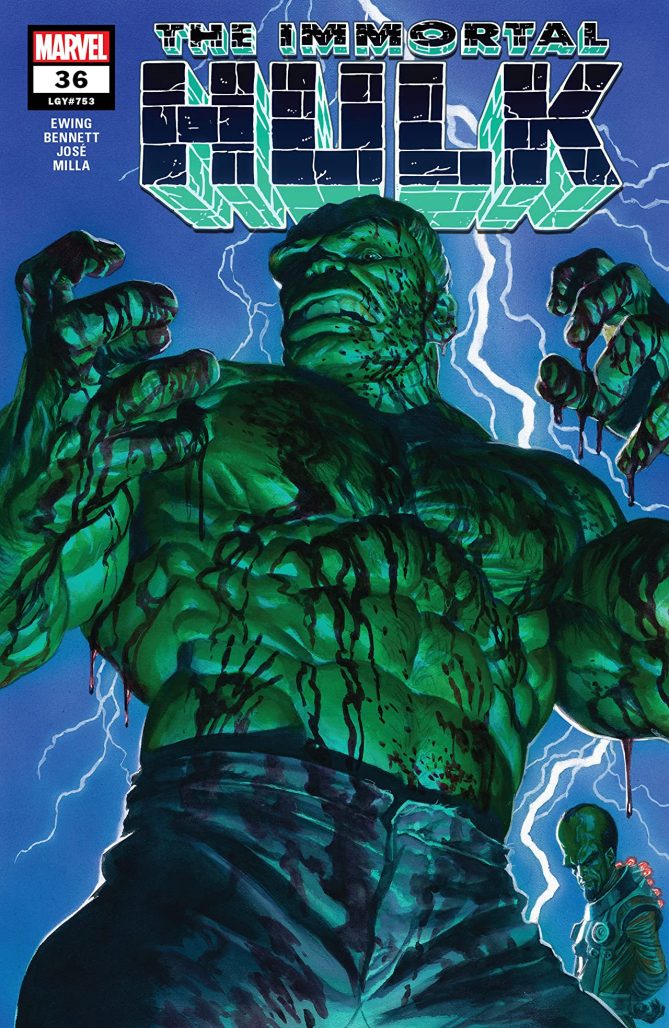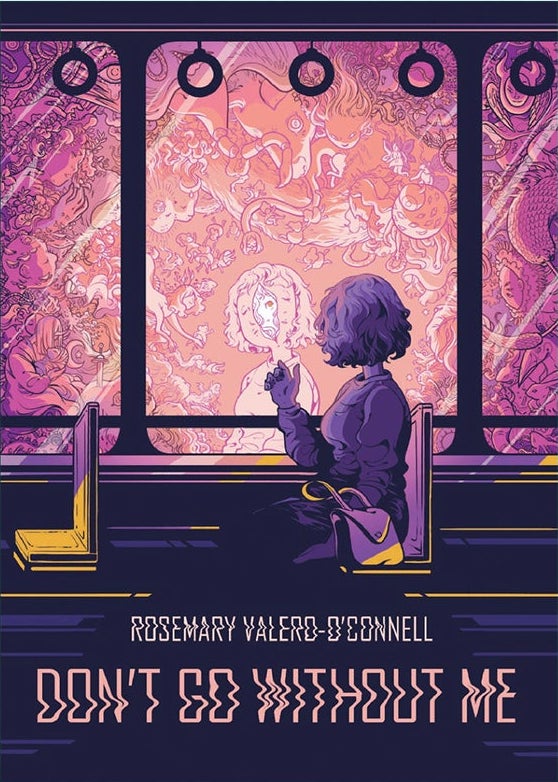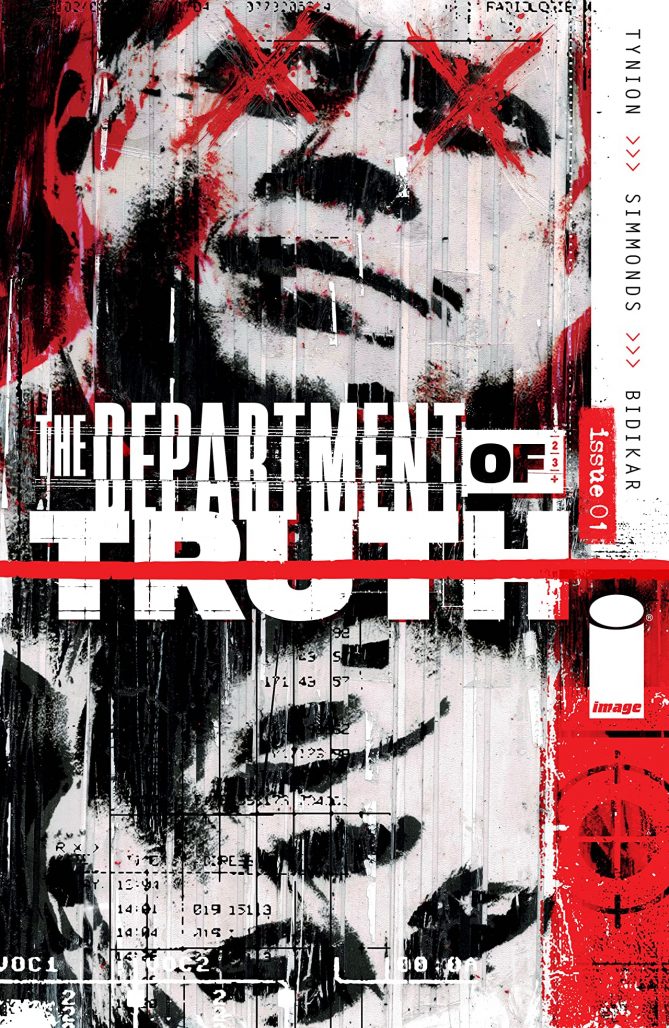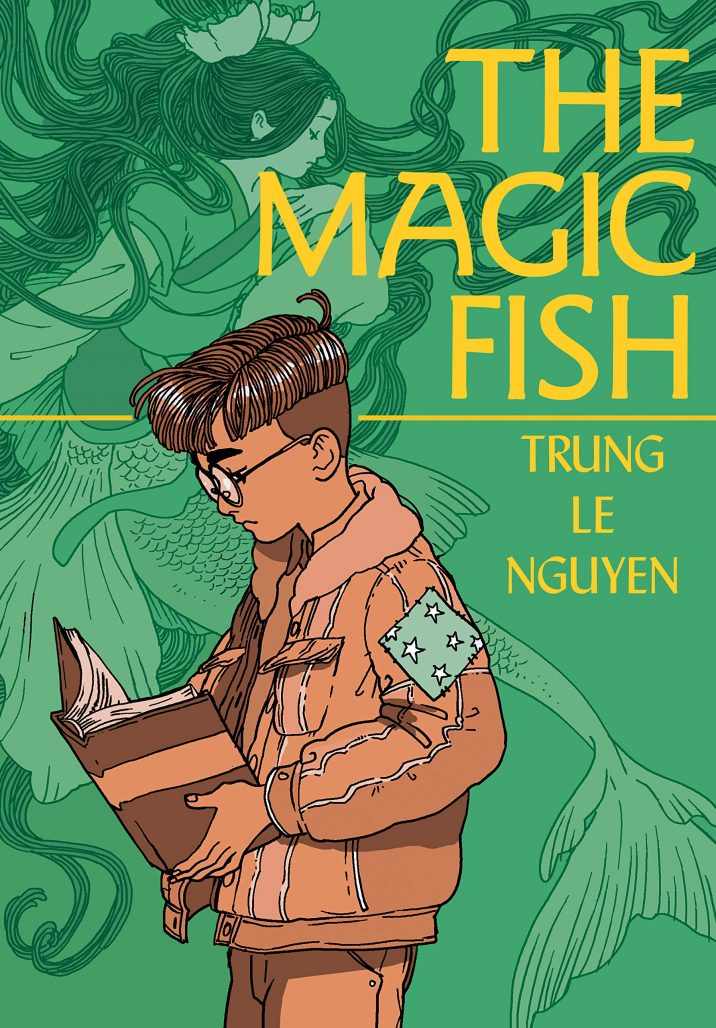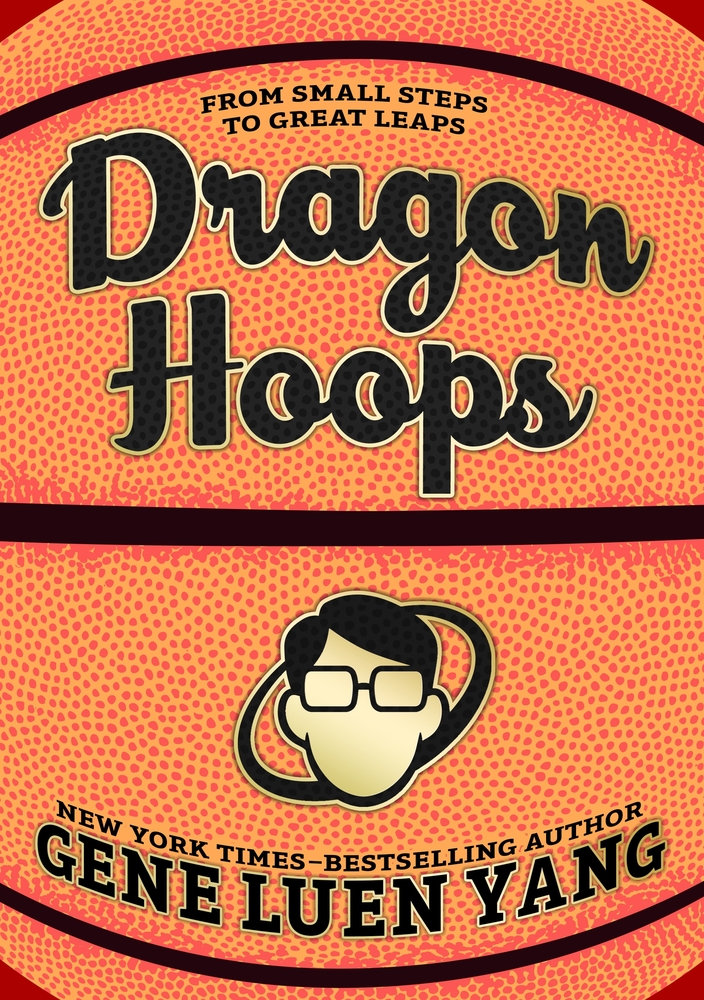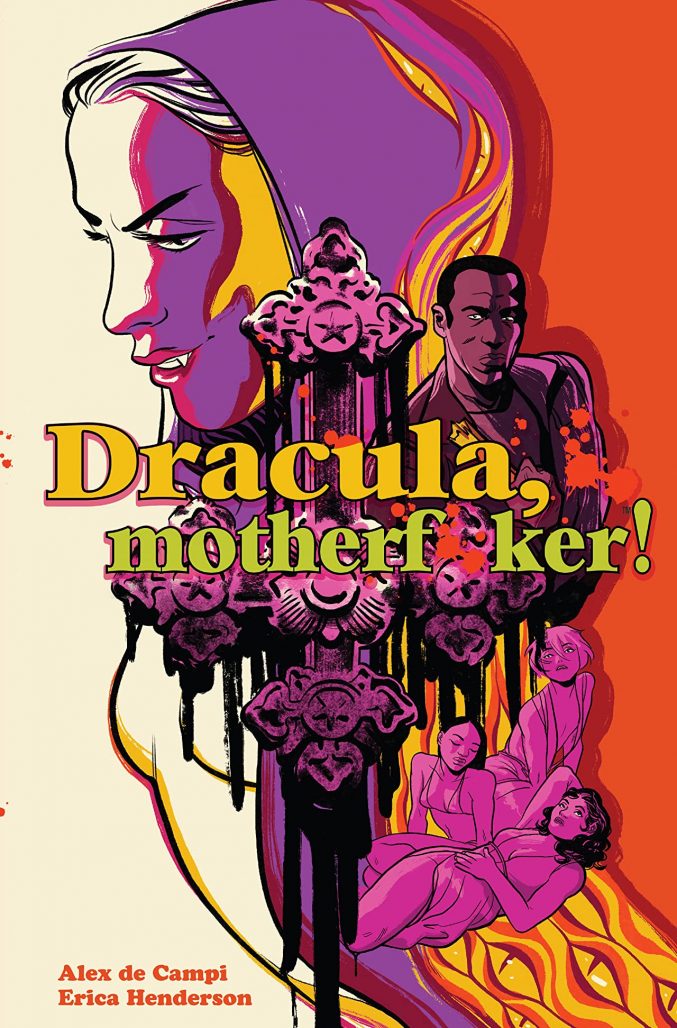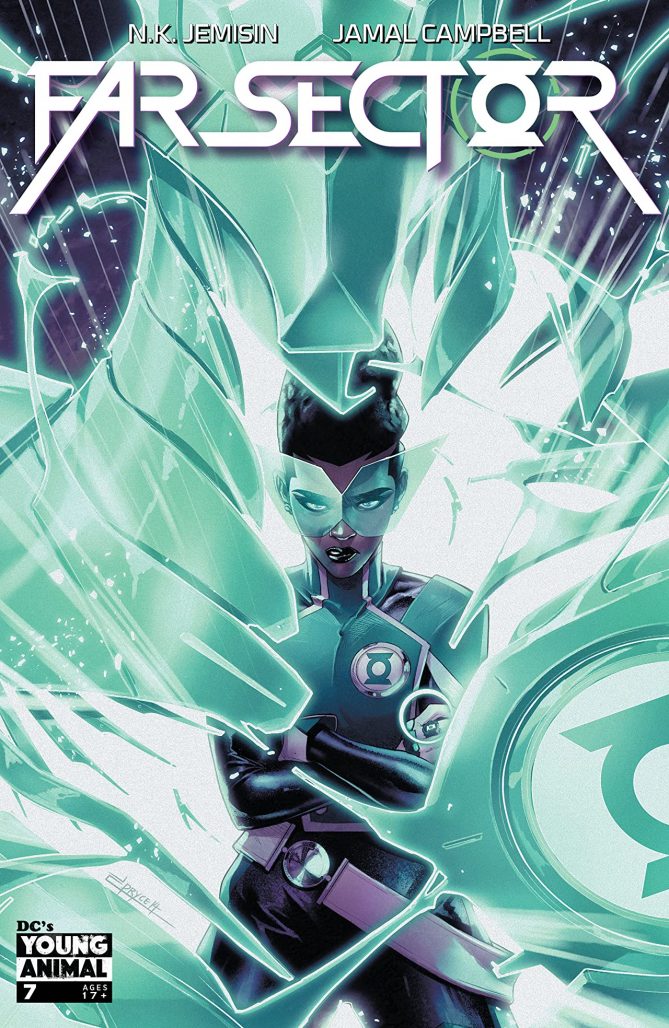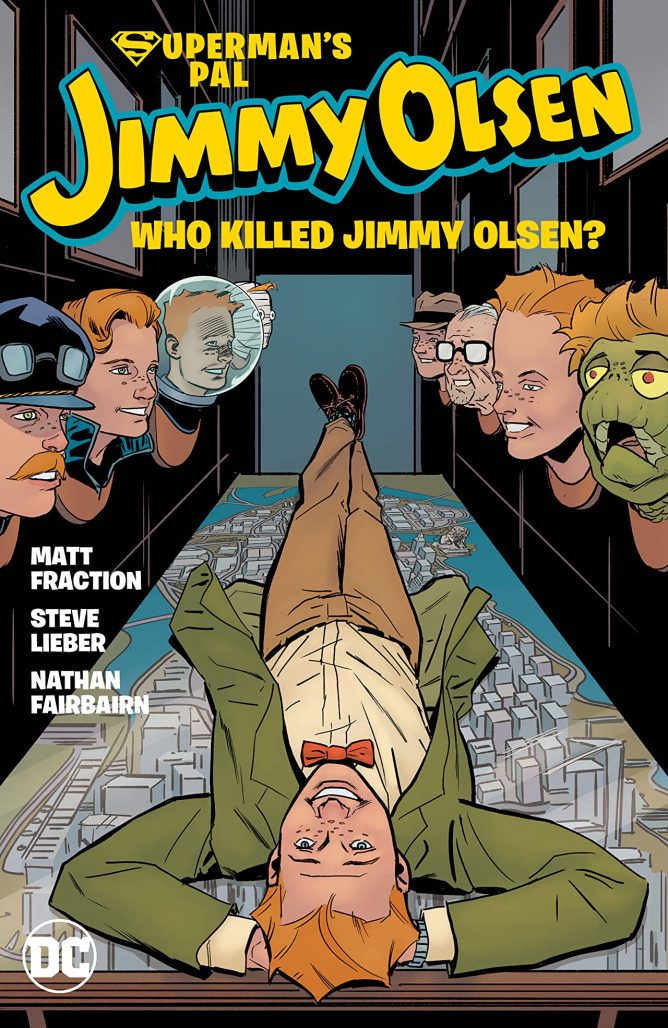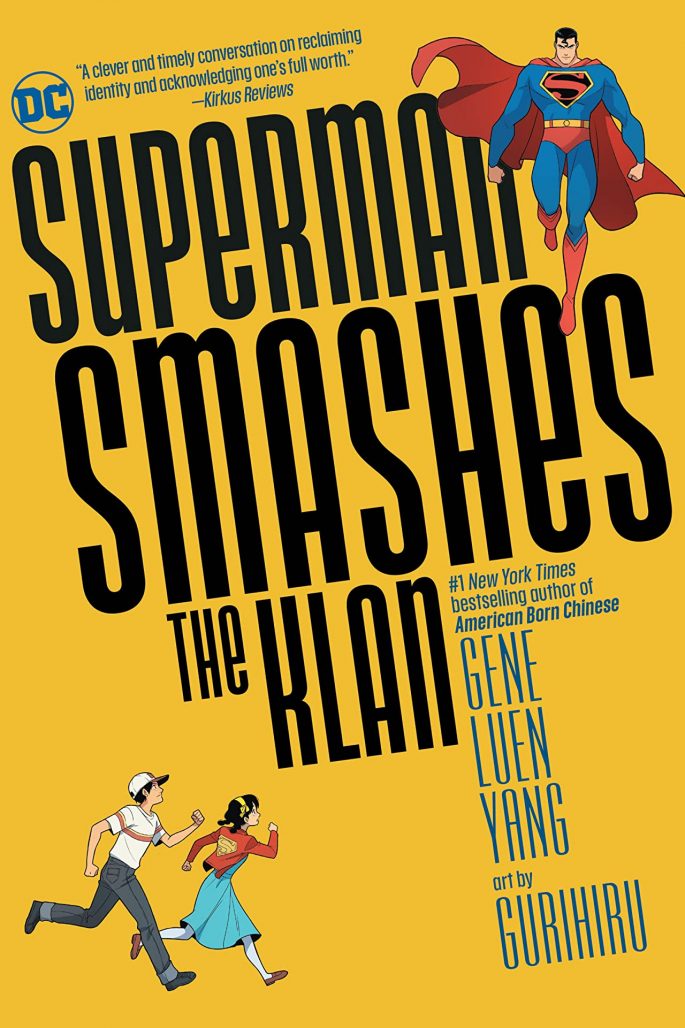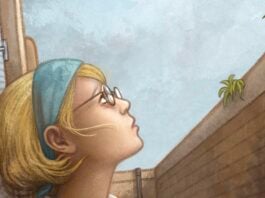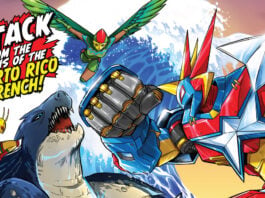2020 challenged us all in ways we never thought we’d be challenged, but some simple pleasures made a comeback. Despite the upheaval in the world, reading books turned out to be a wonderful pastime for those who were homebound. Comics and graphic novels not only survived, but thrived as multiple new imprints and publishers made their mark and kids comics publishing exploded. Creators who we watched emerge as promising newcomers produced fully realized work of thrilling craft. Veterans cartoonists came back with books that cemented their reputations. Superheroes held their own with stories that showed passion and depth. Webcomics, mini-comics, anthologies, historical non-fiction, autobiographies, fantasy, SF, haunting ephemera…Thank God for comics. Thank God, the medium and industry were powerful enough to survive shutdowns, lockdowns and Twitter meltdowns.
“These uncertain times” was a phrase we heard a lot in 2020 – and how the comics industry sustains itself in these new days isn’t always clear. But looking at the ocean of talents with so many stories to tell, the future looks pretty bright from where we sit.
Without further ado, here are the 50 best comics of 2020, as chosen by the staff of The Beat.
Honorable Mentions
The following titles were nominated for the best of 2020 list by The Beat staff.
Twins: A Graphic Novel by Shannon Wright & Varian Johnson (Scholastic Kids)
If you haven’t heard people talking about the graphic novel Twins by Shannon Wright and Varian Johnson yet, you will soon! The story is inspired by Johnson’s personal experiences with his twin brother and brought to life thanks to Wright’s inviting artwork, which is filled with consequential details that add verisimilitude to the characters.
While this may be the debut graphic novel for both Wright and Johnson, it reads like the assured work of experienced industry veterans. Between the gorgeous art and the engaging story, this middle grade graphic novel is so good you’ll have to read it (at least) twice. – Avery Kaplan
Grid Observer by Pat Aulisio (Self-published)
Perhaps it’s because the lockdown brought us all to a standstill that movement became so important to see in comics. Pat Aulisio’s wordless mini-comic series Grid Observer is about movement, escapism, speed and kinetics. Over the course of several issues ranging between 8 and 12 pages, we follow a space biker attempting to escape a god-like entity, who is pursuing him relentlessly. Aulisio’s frenetic scribble-like lines bring a sense of momentum throughout the series that is both refreshing and unexpected. It’s definitely not a comic series for everyone, but Aulisio’s incomparable style seizes your attention and commands you to take a close look at each line, panel, gesture and action. It’s something to experience. – Philippe Leblanc
Little Russia by Francis Desharnais (POW POW Press)
Dead Day by Ryan Parrot, Evgeniy Bornyakov, Juancho!, & Charles Pritchett (Aftershock Comics)
Just when you thought everything that could be said and done with the zombie genre had already been said and done, Aftershock Comics releases Dead Day, a refreshing but still haunting tale that fundamentally challenges the idea behind “life after death”. Parrot’s and Bornyakov’s tale keeps zombiism contained to single day of the year in which the dead come back to see family members or attend to unfinished business. In this case, one of the zombies has set its sights on cold retribution against those that initially got him inside a coffin in the first place. Parrot’s script goes for a more cultural and social angle, on what it actually means to have dead people make visits on a yearly basis. The point isn’t to further the flesh-eating bits of the monsters rather than turn into a different kind of being that keeps life from reaching its intended conclusion. It’s a fascinating and smart play on zombie expectations that yields more surprises than expected. Dead Day represents hope for the zombie genre. Maybe it hasn’t said everything that it can say yet. – Ricardo Serrano Denis
Stealth by Mike Costa, Nate Bellegarde, Tamra Bonvillain, Sal Cipriano, & Jason Howard (Image Comics)
This series’ first issue was a punch to the gut exacted with surgical precision. Mike Costa and Nate Bellegarde seemed to not be interested in settling for less as their story about a superhero that suffers from Alzheimer’s and his son’s attempts at getting him to stop for the sake of preventing confused violence over innocent people is one of the most emotionally intense reads of 2020. What elevates the story is its attention to the particulars of the superhero’s condition, how it operates and affects both the afflicted and those around him. The sense of worry and downright fear that comes with dealing with such a condition carries over from issue to issue, but never to a point that makes the read unbearable. Costa’s script injects classic superhero/supervillain elements that only makes the situation that more delicate. It keeps the story in constant motion with both plot and character development getting equal attention. It might not be an easy read, but it’s an important one. More importantly, though, Stealth is an unforgetable read. – Ricardo Serrano Denis
Victor & Nora: A Gotham Love Story by Lauren Myracle, Isaac Goodhart, Cris Peter, & Steve Wands (DC Comics)
It’s tempting to assume Victor & Nora is simply tapping into popular YA romantic tragedies exemplified by The Fault in Our Stars or Me and Earl and the Dying Girl. However, it’s a disservice to what Lauren Myracle and Isaac Goodhart accomplish with their latest DC Comics YA graphic novel collaboration. While the acclaimed reinvention of Mister Freeze’s origin by Paul Dini in the classic Batman: TAS episode “Heart of Ice” remains a high point for the character, Nora Fries has always largely been characterized by by her relationship to her supervillain husband. As a result, Myracle is not beholden to continuity and much like “Heart of Ice” she is able to craft a poignant love story wherein Nora has her own agency and not just an object of desire. Goodhart also gets a chance to showcase his chameleon-like skills as an illustrator with sequences intended to emulate aesthetics of other artists including Tim Burton and Eric Carle. – Taimur Dar
Long Way Down: The Graphic Novel by Jason Reynolds & Danica Novgorodoff (Atheneum/Caitlyn Dlouhy Books)
Dancing After TEN by Vivian Chong & Georgia Webber (Fantagraphics)
With a three-tone color palette and two different art styles, Dancing After TEN is a beautiful, profound memoir. Together, Vivian Chong and Georgia Webber present Chong’s life-altering experience with toxic epidermal necrolysis, and the rebuilding of her life thereafter. The journey through serious illness is scary and emotionally difficult, but some of the toughest parts to read come in Chong’s experience of abject human callousness. Chong and Webber are unflinching in their presentation of pain and alienation. And like Webber’s own Dumb: Living Without A Voice, this book makes thoughtful and innovative formal choices when it comes to representing illness and disability. Particularly affecting is the interweaving of Chong’s frenzied, jagged linework alongside Webber’s incredibly intimate, softer style.
At the same time, this is a book is about freedom and expression. Chong is a multi-disciplinary artist and her distinctive artistic philosophy is simultaneously embedded in, and explained by the pages of Dancing After TEN. The use of splash pages becomes a powerful means of exploring Chong’s inner world and her embodiment of radical softness as a new way of being and relating. “I let the flow of my emotions guide me”, she says. A beautiful work of (auto)bio. – Adam Karenina Sherif
Cuisine Chinoise: Five Tales of Food and Life by Zao Dao, with Diana Schutz & Brandon Kandor (Dark Horse Comics)
Folklore elements seamlessly blend with local tall tales, recurring characters blur the line between personal experience and legend, and in Cuisine Chinoise: Tales of Food and Life, Zao Dao turns unlikely circumstances and supernatural effigies into stories about personal identity. Monster kids don’t compromise their cooking for anyone. It’s surreal and relatable (thanks in part to the translation by Brandon Kander and Diana Schutz conveying the contemporary voice, and Adam Pruett’s understated lettering), kind of gross but we like gross. The look lands somewhere between a fantastic yet faithful realism to the natural world similar to classic fairty tale master Edmund Dulac and the smiling cartoonery of Gorillaz designer Jamie Hewlett. The storytelling is both paced and intimate like a zine. The hardcover is oversized, slim, full color, and gorgeous. This one’s not what you’re expecting. – Arpad Lep
X-Factor by Leah Williams, David Baldeon, Israel Silva, & Joe Caramagna (Marvel)
I read literally every X-Men related comic published over the last year, and sadly that meant that I had to read a smorgasbord of Peter David X-Factor. In spite of terrible characterization over the years by David (and others), Polaris became my favorite X-Man over the course of my reading. But never until X-Factor #4 by Leah Williams and Carlos Gomez had I felt a team just got her. That story and the other issues in this series so far have cemented her place at the top of my character rankings, helped immensely in other issues by David Baldeón’s extremely expressive artwork. The way Williams writes Lorna, I am exhilarated and left yearning for the next issue every time I finish one. That’s not to say that Lorna is the only reason I care about the book, because Williams has made me fall in love with everyone on this team, even Akihiro. – Cori McCreery
Paul at Home by Michel Rabagliati (Drawn & Quarterly)
Michel Rabagliati’s Paul stories have endured for 20 years, covering various parts of the biography of the titular character and not always in order. They’ve been defined by a gentleness that doesn’t balk from the down side of life, and which uses all points of the experience spectrum but especially the extremes — happiness and sadness — to say something bigger about the human experience without being grandiose or obvious. With Paul At Home, readers are brought closer to the real time than ever before and we join Paul at a low and lonely time in his life, with Rabagliati coming close to immersing the reader in Paul’s personal experience. In that way it’s hard reading, especially if you’re anywhere close to Paul’s age in this book — everyone has regrets and has experienced displacement from “normal” life — and it’s hard to recommend without the context of all the other Paul titles first. Given that, you can take this as encouragement to go read them now and experience what makes them so special, and then Paul At Home might pack the same punch for you as it did for me. – John Seven
Barbarous by Yuko Ota, Ananth Hirsh, & J.N. Wiedle (Johnny Wander)
Barbarous is the story of a wizard school drop-out named Chiaki. She’s down on her luck when she stumbles into the beefy lizard-man named Leeds, but – as luck would have it – he happens to be the solution to her unemployment difficulties. Centered around a workplace comedy premise, this Johnny Wander webcomic cycles rhythmically through nuanced character moments, an engrossing drip-feed of world-building, and a frankly irresistible will-they-won’t-they romance. And that’s not to mention the visuals. Barbarous is a master-class in design from top to bottom. Colors from Wiedle elevate the already sharp layouts of this series, and characters a drawn to have their hearts splayed out on the page, making it nearly impossible to read without cracking a smile or letting out an “awe” or two. It’s emotional, mysterious, gorgeous to look at and free for you to go read right now (you should do that). – Josh Hilgenberg
Quarantine Comix by Rachael Smith (Self-published)
Let’s face it, 2020 was not a good year for anyone. British cartoonist Rachael Smith channeled all of stress, anxieties, fears, and joys of life under quarantine into a series of daily comics she published on Twitter. Whether it was to discuss the frustrations of socially distanced visits, taking moments to appreciate small things that make life memorable, or the pain of isolation and of missing out on life events and milestones, Quarantine Comix was about the many ways she coped and how that evolved on a daily basis as the year progressed, with floods of new information coming in and an uninterrupted flow of social media posts scrambling our collective brains. There’s a universality to this work that struck a chord with the pulse of society in this depressing year. – Philippe Leblanc
Bang! by Matt Kindt, Wilfredo Torres, Nayoung Kim, & Nate Piekos (Dark Horse Comics)
Batman: Three Jokers by Geoff Johns, Jason Fabok, Brad Anderson, & Rob Leigh (DC Comics/Black Label)
Chasin’ The Bird: Charlie Parker in California by Dave Chisholm with Peter Markowski (Z2 Comics)
DCeased: Dead Planet #1 by Tom Taylor, Trevor Hairsine, Gigi Baldassini, Stefano Gaudiano, Rain Beredo, & Saida Temofonte (DC Comics)
Excellence by Brandon Thomas, Khary Randolph, Emilio Lopez, & Deron Bennett (Image Comics/Skybound)
Excellence by writer Brandon Thomas and artists Khary Randolph and Emilio Lopez lives up to the name. From the excellence of the creative team, the energy and talent they bring is top level, to the layered story of Spencer Dales and the Aegis, a magical secret society that his family is part of. Don’t think of this as a Black version of Harry Potter, because this book is about something, wrapped in dynamic art and styling, the art pumps up the personal and fantastical aspects of Excellence as this title goes in exploring status, gender roles and race. – George Carmona 3rd
Stillwater by Chip Zdarsky, Ramón K. Pérez, Mike Spicer, & Russ Wooton (Image Comics/Skybound)
Write It In Blood by Rory McConville, Joe Palmer, Chris O’Halloran, & Hassan Otsmane-Elhaou (Self-published)
Crisis Zone by Simon Hanselmann (Self-published)
During the pandemic, Simon Hanselmann has updated his Instagram nearly every day with 10 new panels of comics, which is by my count 250+ pages, dating all the way back to March 13. Within these updates, he’s told (and continues to tell) one long and winding story starring his Megg, Mogg, Owl, and related characters. Dubbed Crisis Zone, Hanselmann’s NSFW narrative has reacted to our absurd, turbulent, and devastating year in near-real time. As a result, it is perhaps the comic of 2020.
In Crisis Zone, characters have fought with parents lost to disinformation and fascism. They’ve escaped into Animal Crossing. They’ve gotten sick. They’ve gone to racial injustice protests. They’ve become Internet sensations, and they’ve become Internet pariahs. But the timeliness isn’t all that’s for sale. The range of emotional beats in the story is also consistently surprising and varied, oscillating between madcap hilarity and utter hopelessness. And as in all of Hanselmann’s work, it’s easy to find oneself just wanting the story to end for the sake of the characters on the page. Is anything more 2020 than that? – Zack Quaintance & Avery Kaplan
The Dreaming: Waking Hours by G. Willow Wilson & Nick Robles (DC Comics/Black Label)
Paying the Land by Joe Sacco (Metropolitan Books)
The Loneliness of the Long-Distance Cartoonist by Adrian Tomine (Drawn & Quarterly)
Comics by and about indigenous people are finally getting more attention, and in Paying the Land Joe Sacco turned his meticulous reporting to the story of Canada’s Dene, who are caught in a war to save their culture from mining interests. And in The Loneliness of the Long Distance Cartoonist, Adrian Tomine explores all the painful slights of the creative life while adding a big dose of heart at the end. Points to Tomine for one of the year’s best packages, as well. —Heidi MacDonald
The Top 50
The following titles were chosen as the top 50 comics of 2020 by a vote of The Beat staff.
Snapdragon by Kat Leyh (First Second Books)
Kat Leyh’s magnificent Snapdragon is another strong argument from 2020’s best books that the young adult market makes kids strong readers because what they publish is intended for people of all ages. The most interesting thing about the witch who cares for the swamp’s stray animals isn’t what she does with her bone collection (don’t worry, it’s still cool), it’s the unlikely but unavoidable friendship that she forms with the books’ titular star. Snap is bubbling over where Jacks is still, loud to her soft, magnetic, meteoric, a great read. Leyh’s written a transgenerational romance with every type of love, from partners to family (found or otherwise) to finding your calling, littered with character moments, drawn with affection and humor. A book populated with as many perspectives as there are people, but telling a story with them in it rather than about them. Also with motorcycles and possum babies. – Arpad Lep
Heart of the City by Christina “Steenz” Stewart (Andrews McMeel Publishing)
In taking over Heart of the City, Steenz – that’s the King of Comics to you –introduced some outstanding new characters and brought her irresistible style along with her, including her astonishing knack for facial expressions and her impeccable reaction panels (which frequently feature references to meme and pop culture).
Fun, funny, and fresh, Heart of the City reminds me of my earliest comic obsessions, which were comedy-based comic digests and the daily newspaper strips. It’s exciting to think that a whole new generation of comic fans is waking up to Steenz’s Heart of the City each morning. – Avery Kaplan
Hellions by Zeb Wells, Stephen Segovia, David Curiel, & Cory Petit (Marvel)
As mentioned previously, I read a LOT of X-Men books this year. To the tune of around six thousand issues. In the top echelon of all of those issues are two runs written by Zeb Wells. His New Mutants was probably the best ever run on that particular title, but his Hellions is a masterclass above that. Zeb Wells loves to tackle darker emotional stories, but he does so with such a sardonic wit that the darkness doesn’t overwhelm you. Everyone in this book has severe problems that are going to be messy and complex, but the book is still obscenely funny when it needs to be. On top of that, literally everyone in this book looks amazing as drawn by Stephen Segovia (or god bless, Carmen Carnero during X of Swords). Zeb Wells is well on his way to becoming possibly my favorite X-Men-related writer of all time, and it will be deserved if it happens. – Cori McCreery
Child Star by Brian “Box” Brown (First Second Books)
The snappy catchphrase; the action figures; the cereal; the drug fueled legal troubles; the First Lady’s guest stint; the failed comeback – it’s all here in Box Brown’s docu-comic style retelling of the life of Owen Eugene, an imaginary child star who stands in for so many who rose and fell in real life. As the star of the hit sitcom “Everyone’s Friend”, Owen is on top of the world – but the world comes crashing down when he isn’t the newest cute kid on the scene. Told through interviews with parents, ex-wives, agents, Hollywood executives and even a choreographer, Owen’s life story is filled with the tragic consequences of failing to plan for the future. It’s also a sharp comment on 80s style sitcoms, their bad decision making and bland homilies sealed with a hug before the final commercial. Brown has been turning out a steady series of non-fiction comics about eccentric icons (Andre the Giant, Andy Kaufmann) and popular pastimes (Tetris, weed) but he’s just as insightful here. – Heidi MacDonald
Fire Power by Robert Kirkman, Chris Samnee, Matthew Wilson, & Rus Wooton (Image Comics/Skybound)
Robert Kirkman’s latest Skybound launch, with artists Chris Samnee, Matt Wilson, and Rus Wooton, has a lot of places where it can go wrong. The sensitivity of the subject matter is mostly where my attention was focused, but the book very early on presented itself as a fun, pulpy, martial arts action story with some dramatic elements so I became less and less worried that the book would stumble into a usual pitfall. In a pretty tumultuous year, I just had a lot of fun reading this book. The family dynamics are fresh and extremely relatable, with a few pairs of healthy relationships that contribute to the easy-going nature of the book. Protagonist Owen Johnson learned of his immense power in the prelude OGN that was published in August of this year, and the ongoing series starts with a time-jump as Owen has left the temple and has started a family.
Obviously, the star of the show here is Samnee. I’m just consistently blown away whenever I read any of his work, and his expression-work and character models here are just so beautiful. He finds the humour in the smallest of expressions and gives so much life to every panel. His action scenes are clear and fresh, like the stunning one that opens the second issue where Owen silently fights some ninjas while his family is sleeping. This book doesn’t want any awards for innovation, but brings to life a fun, martial arts concept that I haven’t seen in a while. It’s an engrossing and addicting read. – Hussein Wasiti
Guardians of the Galaxy by Al Ewing, Juan Cabal, Federico Blee, & Cory Petit (Marvel Comics)
Al Ewing is tired of this world and its people. He’s tired of being caught in the tangle of their lives, and thus he’s off to space to create a much better world. As Richard Rider notes in issue six of this series, it’s much more civilised. The more cosmic side of the Marvel Universe has been a little confusing for me, so Ewing’s mission to, as he told me earlier this year, create “a cohesive space political landscape” really intrigued me. Viewing this landscape through the lens of the Guardians is a compelling choice, as they have their big battles and their loads of emotional baggage but they’re hit with news of the Kree/Skrull Alliance and they have to deal with that stuff for an issue or two. Juann Cabal, Federico Blee, and Cory Petit are the artistic masterminds behind the series (with Marcio Takara filling in on a couple of issues) and much of the strength of the book can be found in Cabal’s inventive pages. His unique, sometimes psychedelic, action scenes consistently blew my mind. Aside from the X-books and his own Hulk run, this is probably the Marvel book I look forward to the most every month. – Hussein Wasiti
Iron Man by Christopher Cantwell, CAFU, Frank D’Armata, & Joe Caramagna (Marvel Comics)
Iron Man’s been pretty… tied-up… since his most recent relaunch two years ago so his current overhaul led by Christopher Cantwell, Cafu, Frank D’Armata, and Joe Caramagna simultaneously brings the character back to his roots while also reintroducing Tony to his greatest nemesis: himself. Steeped in self-deprecation and a bad case of the “woe is me,” Tony tries to contextualise some pretty big developments in his life while also trying to get his hands back on the wheel.
The question that Cantwell poses is a little more interesting than the book lets on: how does someone like Tony Stark go back to their roots? When Tony does that, he liquidates his stocks to the tune of seventy billion dollars, buys a historic brownstone, a classic car, and wears bunny slippers to parties attended by the richest people on the planet. In comes Patsy Walker, a.k.a. Hellcat, who gives Tony’s latest crisis the harsh truth he needs to hear; all this is still his ego talking. It’s a great encapsulation of Iron Man, and a beautiful one to boot. Artist Cafu and colourist D’Armata bring a grounded, almost metallic, feel and sheen to the book that keeps it fresh and vibrant. Cafu’s characters look great and whatever action scenes have the usual spectacle you’d expect from a Marvel book. In a year of winners, this is one of Marvel’s strongest launches in years. – Hussein Wasiti
Thor by Donny Cates, Nic Klein, Aaron Kuder, Matthew Wilson, & Joe Sabino (Marvel Comics)
After a multi-year long run that defined the character for a whole new generation, you’d think Donny Cates would have felt pretty small in those new shoes of his. Alas! This was not the case. Cates’ run, along with artists Nic Klein, guest artist Aaron Kuder, Matt Wilson, and Joe Sabino has been a stunning and satisfying examination of Thor as the All-Father. Cates yet again falls into the now-standard “[BLANK] is coming” story device, but that was quickly done with. Thor’s role as king of Asgard is one that he needs some time getting used to, and Cates exploring his mental state during this new period of his life is honestly very refreshing. Klein storms onto the stage with the rage Mjolnir with this run. His work on this book has simply been brilliant. The detail and scale he employs is insane and he very quickly made a huge mark on the character for me. Coupled with Thor veterans Wilson and Sabino, this book is definitely one of Marvel’s most exciting debuts of the year. – Hussein Wasiti
Genius Animals? by Vali Chandrasakaran & Jun-Pierre Shiozawa (Self-published)
Genius Animals? arrived just when we needed it. In mid-June, while much of the country was still in quarantine and the wheels of the direct market were just starting to return to normal distribution, first-time creators Vali Chandrasekaran and Jun-Pierre Shiozawa released, through their website, the first chapter of their graphic novel. All eight chapters of the book have since been released online. Many creators have found innovative ways to release their work in the midst of the pandemic, but I don’t know of any others who have released an entire finished graphic novel’s worth of material and made it completely free to read. And for being Chandrasekaran & Shiozawa’s first graphic novel, Genius Animals? is remarkably refined, tightly plotted, carefully scripted, and lushly visualized. I can’t wait to see what else these two have up their sleeves. – Joe Grunenwald
A Gift for a Ghost by Borja González (Abrams)
Spanish cartoonist Borja Gonzalez’s first book-length comic explores, on the surface, different eras of female defiance by playing with concepts of time travel and ghost stories but instead of using them in obvious, plot-driven ways opts for a more mysterious, metaphorical approach to the tropes. This elevates what transpires and also extends their impact, inviting careful rereads with open minds. In one thread, three teenage girls in 2016 attempt to form a band with various complications. In the other, in 1856, Teresa insists on writing poetry and focusing on the macabre, in defiance of her family. Beautifully illustrated, Gonzalez fashions an otherworldly reality that supplies dark tinges to the characters’ actions and argues for a more abstract reading of what unfolds. – John Seven
One Story by Gipi, with Jamie Richards (Fantagraphics)
Tracking history and lineage in terms of emotions rather than events, Gipi takes two experiences in two different time periods — World War I and the eternal Now — to document the process of aging and changing. In the present day narrative is Landi, in his 50s and recovering from a breakdown. He’s obsessed with how age changes perception, as well as the war diary of great grandfather Mauro, whose life unfolds as an alternate narrative of trauma. By wrapping these together, Gipi illustrates the continuum between the generations rather than chasms, and suggests that one human life is merely part of a progression that fashions a much grander organism. – John Seven
Interim by Allissa Chan (ShortBox)
Set in a lo-fi world of blues and oranges, Alissa Chan’s Interim is a short but affecting parable of moving forward. In an empty, Escher-like city where death is a reshaping, a star crashes and finds itself trapped. Luckily, a friendly crow comes to its aid and together they try to understand how to escape. It’s a story of trying and failing and trying again in the face of a silent, environmental adversary seemingly bent on holding its citizens captive – and in this year that systemic issues have become increasingly more brazen, that metaphor gets a lot of mileage. But the themes of Interim are best summed up by the star, who wonders at one point “if this is just it. This is what we do for the rest of forever.” It’s a difficult question, but a nearly ubiquitous one. In 40 pages, Interim might not give a definitive answer, but it’s filled beyond its covers with camaraderie, solace, and aspiration. And that’s enough. – Josh Hilgenberg
Ice Cream Man Presents: Quarantine Comix by W. Maxwell Prince, Martín Morazzo, Chris O’Halloran, Good Old Neon, & Various (Image Comics)
Now more than ever, make sure to avoid the Ice Cream Man if you see one.
When the COVID-19 crisis was still a relatively new thing, the creative team behind Image Comics’ anthology horror series Ice Cream Man organized an online series of six short-stories all set in the Ice Cream Man Universe. With a different creative team behind each short, every iteration was an exciting, fresh take on the already amazing ICM concept. Creepy and delightful in all of the best ways, the book’s online and eventual print iteration both saw proceeds go to the Comicbook United Fund/BINC to support struggling comic shops. At a time when there weren’t new comics coming out, Quarantine Comix gave fans a weekly issue to anticipate; but more importantly, it was actually a damn good comic featuring the terrifying Mr. Sweet. Without diving too far into all of the zany concepts present in the book- one of my favorites was a convention for people named Mike- this is a must read for anyone looking for a brief, enticing story or people looking to dive further into one of the most interesting horror series in comics. – Nick Kazden
Ping Pong by Taiyo Matsumoto (VIZ Media)
We finally received an English translation of Taiyo Matsumoto’s classic series Ping Pong, thanks to Viz Media. This sports manga tells the tale of Smile and Peco, two table tennis experts who have been playing it since they were kids. Their arrival in high school has changed their relationship with the sport, especially now that they are both part of their school’s competitive team. The pressure affects them and challenges their friendship, but also their sense of self. Ping Pong is about passion and what it does to someone. While the premise might seem unexciting, the mastery is in the execution. Matsumoto takes us on the journey that Smile and Peco embark on and gives us an intimate look at their inner life. Matsumoto’s clever composition and lines are very effective in conveying every character’s emotion, as well as the action of fast-paced table tennis games. At 1,040 pages over two volumes, Ping Pong is a long, but essential read. – Philippe Leblanc
Empyre by Al Ewing, Dan Slott, Valerio Schiti, Marte Gracia, & Joe Caramagna (Marvel Comics)
Empyre is what superhero comic events should aspire to: a moderately lengthed and tightly scripted universe-spanning story that’s versatile enough to set up quality tie-ins without imposing its will over the entirety of the company’s continuity. A mouthful, I know, but it goes to show how tough of a balancing act events can be. Ewing, Slott, and Schiti pull it off beautifully with a story that puts alien plant life on the offensive against a world that’s clearly disregarded it. Empyre‘s successes rest on how it distances itself from the same core Avengers characters that tend to dominate these type of stories in favor of focusing on those who’ve had less of a chance to shine in the main arcs of their event. This freed up those same tried and true characters from their protagonistic responsibilities to focus on other parts of the conflict, resulting in some highly compelling and noteworthy tie-in miniseries that demand to be read. The art is energetic and everything is paced appropriately so as not to overstay its welcome. Marvel and DC can learn a lot from this event for the coming new year. – Ricardo Serrano Denis
Fangs by Sarah Andersen (Tapas)
Isn’t it funny how new love can make everything in the world seem new again? In the webcomic Fangs, Sarah Andersen makes everything about young love seem new again by casting a pair of monsters as her romantic leads.
It all begins when a werewolf and a vampire hit it off at the Odditorium, a local dive that welcomes patrons of a monstrous stripe. Soon, the new couple is treading familiar ground: the process of exploring one another’s preferences and boundaries in the early stages of a relationship.
So what if the questions are more about their favorite methods of murder rather than what type of restaurants they prefer? Everyone knows romance can get messy, after all! – Avery Kaplan
Venom by Donny Cates, Ryan Stegman, JP Mayer, Frank Martin, & Clayton Cowles (Marvel Comics)
The team at Venom have been slowly building to something big over the past couple of years. We’re getting the start of that payoff this month with the publication of King in Black #1. While The Black Costume Saga happened in Amazing Spider-Man in the 1980s, Donny Cates and company created a new saga for Spider-Man’s former black costume, filling in holes in Venom’s history and weaving an expansive symbiote tapestry throughout the history of the Marvel Universe. 2020 saw the return of Mark Bagley, Carnage co-creator and penciller of Venom’s first solo comic, to the character, in Venom Island. The last time I felt this level of epic storytelling at Marvel was during Jason Aaron’s Thor run. Venom is a Marvel must read! – Billy Henehan
Ex.Mag by Various (Peow Studios)
Peow, publisher of tomorrow’s comics, serves up this year’s most ambitious anthology series: Ex.Mag. Unexpected and nontraditional art styles are the standard for each highly flavored issue. Volume one, Cyberpunk: Full Metal Dreamland, defines the genre not by bleeding edge visual concepts but in the stories’ capacity to show the severe cost unbridled tech dreams accrue. Connor Willumsen’s story is mind-bending. Sophia Foster-Dimino’s is haunting. The second volume, Paranormal Romance: Cross My Heart, really shows off the superb printing of the series. Pages in pink and purple, well taken advantage of by that issue’s artists. From Natasha Allegri’s confusing charismatic woodland folk office workers to Michelle Kwon’s style switching identity destruction body horror, the issue will compel readers to feel every possible emotion. Look at the talent list in these things and the names I haven’t brought up will knock you out; the ones you don’t know, for example the writer who is seven working with the artist who is thirty-two, those ones you need to get to know. More anthologies without a set page limit for storytellers, please. Can’t wait for volume three. – Arpad Lep
Killadelphia by Rodney Barnes, Jason Shawn Alexander, Luis NCT, & Marshall Dillon (Image Comics)
Those looking for an unwavering example of black horror and its capacity to tap into underrepresented experiences for urgent and relevant fears need look no further than Killadelphia. Rodney Barnes and Jason Shawn Alexander create an unforgiving urban vampire horrorscape that digs into the very foundation of the United States to look at how racism finds its place in its DNA. This year saw the series find its discourses and metaphors in the realm of slavery to show how the shackles that bound black men and women in the past continue doing so today. The inclusion of a werewolf back-up story titled “Elysium Gardens,” in which violence casts its deadly spotlight on black women and the world they navigate within it only makes Killadelphia an even more crucial read. This is THE example of what horror can do for our times, for our struggles. – Ricardo Serrano Denis
Teenage Mutant Ninja Turtles (ongoing series) by Sophie Campbell & Various (IDW)
It’s a bold new era for the ongoing Teenage Mutant Ninja Turtles series from IDW that sees the “Heroes in a Half-Shell” not only living in a segregated part of Manhattan with newly mutated New York citizens but the introduction of Jennika, new 5th female Ninja Turtle. Strangely, the new TMNT status quo finds itself quite relevant to the current state of the country living in quarantine in the past year. Sophie Campbell has worked on various TMNT projects in the past as either a writer and/or artist, but this time takes the reins as writer on the main title. After the rollercoaster of the last few years, Campbell is following her strength with much more intimate and character driven stories that are much more reflective than a typical Ninja Turtles comic. Make no mistake, action and humor still abound. With the addition of Jennika, April O’Neil is no longer the “token” female character for the series. In fact, the rest of the female cast now gets their time in the spotlight resulting in a TMNT comic that’s more inclusive for all readers without forsaking traditional TMNT readership. – Taimur Dar
J&K by John Pham (Fantagraphics)
J&K is a sublime downer from 1-Up Megazine alum John Pham. Two girls (or puppies, depending on your timeline) are struggling to find stuff that doesn’t suck. Not successfully. Jay and Kay are lovable, natural losers, and Pham’s mall smoothies, bacne babies, and the bubble head aesthetics they occupy look like Cartoon Network on LSD. A hazy dream of gen X nonsense. The book itself is a whole other trip: pro production but the riso print aesthetic. The colors are total sherbet, their texture tactile pleasure. It’s easy to get lost in the sunrise bliss of J&K’s look, and all the goodies that come with it (collector’s cards, a tinier magazine, rare vinyl record by a band you’ve never heard of); the read itself is as subtle as the printing is lush. Slightly crushing, deeply satisfying, a testament to the power of comics in print. – Arpad Lep
Bug Boys (reissue) by Laura Knetzger (Random House Graphic)
In Bug Boys by Laura Knetzger, best bug friends forever Stag-B and Rhino-B face a series of adventures in the wider world – in the world of insects, in the world of humans, and perhaps most importantly, within themselves.
This middle grade graphic novel is filled with bright and joyful artwork and a reflective story that digs deeper than one might expect… and the introduction of Dome Spider, the Bug Village librarian, offers some of the most effortlessly funny panels of the year.
Plus, like many of the books in the superb RH Graphic line, this graphic novel – which is technically a rerelease of comics previously published online – includes “how to draw” back material that will help guide readers who are inspired by Bug Boys to make their own comic. – Avery Kaplan
Séance Tea Party by Reimena Yee (Random House Graphic)
When I first laid eyes on Séance Tea Party by Reimena Yee, I was immediately overtaken by a sense of nostalgia. When I asked her about the process of creating the middle grade graphic novel, she explained that she had looked to vintage Halloween illustrations for inspiration.
This degree of thoughtfulness permeates every angle of Séance Tea Party – see also, the drawings whose appearance in the gutters between panels signify certain thematic concerns, or the way the perspectives of all three main characters are integral to the comic as a whole.
An insightful and unique meditation on coming of age, this comic is nostalgic about childhood without being overly sentimental – and it earns every one of the tears that you’ll invariably shed at its conclusion. – Avery Kaplan
Banned Book Club by Kim Hyun Sook, Ko Hyung-Ju, & Ryan Estrada (Iron Circus Comics)
It’s hard to imagine a more timely story than this semi-autobiographical tale, written by Kim Hyun Sook and Ryan Estrada with art by Ko Hyung-Ju. Set in the early ’80s, in a time of political corruption, oppression and unrest in Korea, Hyun Sook is an inexperienced freshman who goes to college to study English literature. However, when she falls in with the charismatic leader of a “banned book club” she learns what we all have over the last four years: the personal is intimately entwined with the political. Kim and Estrada craft a lively, wide-ranging story while Ko’s art exemplifies the “world style” of comics, melding manhwa and indie art styles to capture both the violence of government pushbacks and college age hijinks and energy. Dealing with a world of state led censorship, torture and even murder, Kim finds it’s individual action that must take place for a better world. Decades later, there’s a happy ending we can only dream of: Korea’s most recent corrupt president was eventually impeached by the very judges she appointed. – Heidi MacDonald
Parable of the Sower by Octavia Butler, Damian Duffy, & John Jennings (Abrams)
This adaptation of the 1993 novel by Octavia Butler probably couldn’t have imagined just how timely it would feel in 2020, but here we are, our lives locked down in the face of a worldwide pandemic, while Damien Duffy and John Jennings render a rough vision of a future where disaster has caused humans to hunker down and fend off the outside world. The gifted protagonist of Butler’s book, Lauren, looks outside the compound that keeps the world at bay and sees possibilities as she plans to forge ahead in service of her own vision of how to be alive in a destructive world. The act of Lauren’s culture-building alongside philosophical ideas and examinations of race to create a visually-powerful science fiction story that advocates for action and activism against even the worst circumstances. – John Seven
X of Swords by Various (Marvel Comics)
After spending all year establishing each X-book as a representation of different pockets of the HiX-Men universe, the X of Swords crossover brought them all smashing together. A 22-issue long event that ties into every X-series, X of Swords sees Krakoa’s 10 sword-wielding champions (including obvious choices like Wolverine and Magik as well as odder choices like Cypher) travel to the inter-dimensional Otherworld to compete for Krakoa’s survival in a series of sometimes deadly and sometimes whacky competitions. Methodically slow-paced for such a long event, the creative teams use the event’s length to their advantage by spending time focusing on how the characters are reacting to the potential world-changing events and allowing each of Arrako’s 10 champions- the “X-Men’s” foes in this cross-dimensional epic- to get entertaining moments in the spotlight.
Jonathan Hickman may be the Head of X, but it’s really Tini Howard, writer of Excalibur (a book I called the best series in the Dawn of X waaaay back in January) who does the heavy-lifting here. Otherworld was a central aspect of her work all year and her Apocalypse-focused chapters in this crossover mark her as one of the character’s best-ever handlers. Not only does X of Swords help wrap up so many of 2020’s plot threads in a neat bow, but it also does a wonderful job of setting up the new landscape for 2021 with a more traditional X-Men team reestablishing themselves as Krakoa’s heroes for the new era. – Nick Kazden
Kent State: Four Dead in Ohio by Derf Beckderf (Abrams)
2020 has been a year of upheaval, challenge, and protest. We like to imagine that America has been a modicum of progress in the intervening decades, but the struggles between ideologies has only grown over time. This realization is what makes Derf Backderf’s Kent State: Four Dead in Ohio, a masterwork of graphic history, the most sharply drawn commentary regarding the current moment in American history. Sure, the events that Derf renders—the lead-up and aftermath of Kent State Massacre of May 1970—are in the past, but the message is relevant for the modern reader. With all of the tools of the medium as his disposal, Derf flexes his pen to show the utter inhumanity and authoritarianism of the National Guard—and the larger body politic—that sought to clamp down on the dissent that young people showed during the height of the Vietnam War.
Like his previous works, Derf is meticulous down the last detail, a reporter who transports the reader down to the page to experience the horror (and humor) from the darkest corners of humanity. In the end, Kent State is a poignant and powerful memorial for the four students who were mercilessly and needlessly killed that day in Ohio, the movement to expand dignity for all, and the folly of placing trust in systems that don’t treat everyone with equal respect. – AJ Frost
The Golden Age, Book One by Roxanne Moreil & Cyril Pedrosa (First Second Books)
Cyril Pedrosa’s illustration work is always lush and complex and it begs stories that are equal in these qualities. Most often this is best served by Pedrosa’s own graphic novels, which are typically dramas of depth that benefit from his visual delivery in adding meaning. The Golden Age is at first glance a fairy tale, co-written by first-time graphic novelist Moreil, and together they take the tropes and world-building of the genre to create something that is familiar enough to provide an entry point, but which blossoms into a substantive and poetic work of social commentary alongside the adventure.
Tilda, the daughter of King Ronan of Antrevers, is prepared to take the throne when her father dies, but faces conspirators within the royal court led by her younger brother and so flees into the wilderness. Gathering her allies, Tilda makes her plans, but Moreil and Pedrosa use this situation to ask questions about changing systems, what it means to tear them down or build them up, how a reformist rebel must live the ideals they fight for, rather than just stand for them, as well as observations on class, power, and gender roles. The Golden Age gets heavy, but is never burdened by the weight. Instead themes glide along with plot and the book is as exciting as it is intelligent and artful. – John Seven
Sports is Hell by Ben Passmore (Koyama Press)
As the creator who brought Your Black Friend into the world and as a regular contributor to The Nib, Ben Passmore really is one of the foremost political cartoonists working today. For me his voice is distinctive in that he’s prepared to critique even the most radical of positions while also owning his own set of values and being unafraid of including earnest self-reflection in his work.
In this book, Passmore examines the cultural moment of Black Lives Matter protests in the context of the reactionary pushback against the supposed politicisation of commercial sports events – in particular yes, the gesture of taking a knee during the national anthem. Sports Is Hell deftly addresses the national conversation which is helmed principally by detached white television voices with the luxury of being perceived as neutral, as well as the more complex and nuanced intra-community conversation between Black people who of course have lived experience on which to draw.
With Sports Is Hell, Passmore’s working in an expansive, almost trippy mode that will be familiar to readers of his science fiction odyssey Daygloayhole. And while this book’s not short of dispassionate brutality and white supremacist militias, Passmore strikes a surreal tone – his incidental presentations of micro-aggressions are always funny as heck, and with this outing he turns the dial all the way up. If you know, you do indeed know. – Adam Karenina Sherif
Jack Kirby: The Epic Life of the King of Comics by Tom Scioli (Ten Speed Press)
In an era where comic book superheroes dominate movie and television screens, taking the time to remember that these icons were once just ideas put to paper is, if not essential, then worthwhile from a historical standpoint. No matter how many times we see these characters—characters such as Iron Man, Captain America, Mister Miracle, the Hulk, Black Panther—what connects them all is that they sprang from the pen and imagination of Jack Kirby. Though Kirby is “The King” and held in high regard by those in the industry, to the general public Kirby is a footnote. But Tom Scioli’s Jack Kirby: The Epic Life of the King of Comics, sets out to correct the record. And correct it, he does! Scioli sets a new standard in graphic biography and history, using his unique auteur vision to create a canvas that explores Kirby’s life, creation, and legacy in the comics industry, all in one definitive book. – AJ Frost
Karate Prom by Kyle Starks (Self-published)
In the early days of what now feels like an endless pandemic, cartoonist Kyle Starks committed to a deceptively simple mission: create a comic, for which readers could pay as little as $0, that would make them happy during the darkest moment in recent history. His friend and occasional collaborator Chris Schweizer suggested he do something with the title “Karate Prom,” and by May, Starks had written, drawn, and lettered just under 40 pages of concentrated comic book joy.
This romantic action comedy, about two karate-fighting teens whose prom is interrupted when a vengeful ex-boyfriend hires a gang of martial artists to beat them up, has everything that makes Starks one of today’s most entertaining cartoonists. I haven’t laughed this hard at a comic since… well, since the last time I read a Kyle Starks comic. And despite an uncomplicated, unpretentious cartooning style, few artists in comics are able to draw fluid, exhilarating action as Starks does with a few clean lines.
Starks has made a career out of raucous action comedies like Sexcastle and Rock Candy Mountain, but Karate Prom, like the rest of his portfolio, is ultimately powered by its buoyant heart. At a time when most of us are numbed by despair, a short comic that makes us smile from ear to ear is a staggering accomplishment. – Greg Silber
X-Men: Marvels Snapshot #1 by Jay Edidin, Tom Reilly, Chris O’Halloran, & Tom Orzechowski (Marvel Comics)
Jay Edidin loves Cyclops. Anyone who’s dipped their toes into the podcast he co-hosts, “Jay and Miles X-Plain the X-Men,” or even glanced at his Twitter feed, can tell you as much. With his first writing credit on a Marvel comic, it’s clear that he’s poured every ounce of love for his favorite character into a single, condensed package. What makes Marvels Snapshots: X-Men such a stellar achievement isn’t just Edidin’s palpable enthusiasm, but the sense that he thought deeply about why Scott Summers–and the X-Men as a concept–means so much to him, and so many others who relate to The Mutant Metaphor.
Edidin packs a lot into this 20-odd-page one-shot about teenage Scott, but it’s presented effortlessly by artist Tom Reilly, whose inventive layouts make this dense read flow smoothly, not to mention packing an emotional punch. Colorist Chris O’Halloran’s muted palette perfectly captures young Cyclops’ angst and melancholy, but the inclusion of carefully-placed bright colors suggest a more hopeful future. That definitive X-Men letterer Tom Orzechowski is onboard emphasizes how much this deserves a place in the canon of great X-Men stories. Reading this issue, one gets the sense that Edidin waited his entire life to tell this short story. Whether or not they’re set in the Marvel Universe, I hope he tells more. – Greg Silber
Billionaire Island by Mark Russell, Steve Pugh, Chris Chuckry, & Rob Steen (AHOY Comics)
The world’s richest people build themselves a private island to live on while they wait out the end of the world. Could never happen, right? But during a global pandemic where 614 people who were already billionaires managed to add nearly a trillion dollars to their collective wealth, while at the same time millions of people around the United States have lost their jobs and are unable to pay their rent, the premise of Mark Russell & Steve Pugh’s Billionaire Island sounds a lot less far-fetched. The super-rich already live in an entirely different world than the rest of us — Russell & Pugh’s satire just makes it more obvious. It’s a series that’s simultaneously infuriating and hysterically funny in its indictment of not just the 1%, but of the people — and the economic system — that enable them. – Joe Grunenwald
Marauders by Gerry Duggan, Stefano Caselli, Edgar Delgado, & Cory Petit (Marvel Comics)
There are a lot of X-Men series to juggle at the moment- with even more slated to come out soon- but one of the very best is Gerry Duggan, Stefano Caselli, & Edgar Delgado’s Marauders. Each X-book has a different focus and entry-point into the larger Krakoa landscape, and this book’s hook is reestablishing the Hellfire Trading Company as both a formal and informal source of power for Krakoa in a new, mutant dominated economy. With excellent characters like Kate Pryde and Emma Frost leading the organization and the book, each issue is packed full of memorable moments, sharp dialogue and killer outfits.
Outside of the larger X Of Swords event, which is also covered on this list, the book spent a lot of time exploring the mystery and potential consequences of Kate’s inability to access the new mutant portals and her frustrations associated with trying to establish herself as a leader of Hellfire and member of the Quiet Council without being able to step foot on Krakoa. The Dawn of X is packed full of entertaining villains and Duggan’s take on the conniving Sebastian Shaw is a great driving force for this book as well.The new island nation may be the new seat of mutant power, but Marauders shows that mutants can still have a positive presence (and a lot of fun if you’re looking for a dance club or quick tattoo) in the larger Marvel Universe. – Nick Kazden
Big Black: Stand at Attica by Frank “Big Black” Smith, Jared Reinmuth, & Améziane (BOOM! Studios)
America’s history of racial tension was laid bare for all to see this summer. The murders of George Floyd and Jacob Blake and the ensuing protests proved that America has not yet addressed some fundamental issues in it’s treatment of African-Americans. It’s shocking in many ways that things haven’t changed all that much in the last 50 years. Big Black: Stand at Attica focuses on Frank “Big Black” Smith, a prisoner at the Attica State Prison in 1971. A rebellion inside the prison against the inhumane treatment and the injustice of the prison system was met with one of the bloodiest responses in American history. Jared Reinmuth and Améziane manage to portray the incident with a compassionate eye. It’s heart-wrenching to know that Frank “Big Black” Smith found himself at the center of an uprising, struggling to reach a peaceful end to both the riot and the abominable conditions. It’s one of the most challenging and interesting graphic novels of the year. – Philippe Leblanc
X-Men by Jonathan Hickman & Various (Marvel Comics)
Prior to House of X/Powers of X (hereafter HoX/PoX), the X-Men series had been growing stale. Attempts at injecting life back into the franchise were often interesting, but often ran out of steam. The paradigm shifts brought forward by last year’s HoX/PoX was an incredible sci-fi fantasy concept filled with tremendous potential. What remained to be seen was if X-Men could keep that momentum going. We’re happy to say that it did. Throughout 2020 (pandemic-hiatus aside), writer Jonathan Hickman (alongside the always impressive Leinil Francis Yu, Mahmud Asrar, Matteo Buffagni, and R.B. Silva) managed to tell bite-sized stories in this larger world and contributed to create a portrait of the X-Men’s new world. Charles Xavier, Magneto and what seems to be every X-Men character ever created, are solidifying their position as a nation state on the living island of Krakoa. They are trying to make the world a better place for mutants. The stories move you from the big picture of the ongoing story, like Xavier, Magneto and Apocalypse attending a world leader summit, to smaller moments, like Vulcan’s lonesome apathy on the moon. It’s an interesting world that keeps unfolding. This series has a promising future. – Philippe Leblanc
Class Act by Jerry Craft (Quill Tree Books)
Jerry Craft’s New Kid had the honor of being the first graphic novel to be awarded the Newberry Medal. A year later, Craft returns to the Riverdale Academy Day School with the sequel Class Act. While New Kid focused on Jordan Banks, one of the few African-Americans attending Riverdale, this time around his friend Drew Ellis takes center stage. Think Miles Morales attending Visions Academy minus the super powers. Obviously, reading the first graphic novel enriches your experience but surprisingly Class Act is quite accessible on its own. At the time when people are craving more diverse and inclusive stories, Craft has once again produced yet another all-ages work that simultaneously entertains but also educates the minority experience without being preachy. I’d be remiss not to mention one of my favorite scenes involves Drew pleading his case to dress as Thor for a Halloween Avengers costume and not Black Panther. – Taimur Dar
John Constantine: Hellblazer by Simon Spurrier, Aaron Campbell, Matias Bergara, Jordie Bellaire, & Aditya Bidikar (DC Comics/Black Label)
This book was done dirty. This stellar run by Simon Spurrier, Aaron Campbell, Matias Bergara, Jordie Bellaire, and Aditya Bidikar is quite frankly the best thing DC has done in years, and it unfortunately published its final issue earlier this month. I don’t mean to repeat what I’ve written about this book in the past, but my original points still stand. This is an aggressively foreign book, written like it came out of the British Invasion of comics in the 80s. It simply tackled themes, characters, and political turmoil that you’d never see in a major American comics publisher like DC. Campbell and Bergara’s interior work on the title might be some of the best pages in the character’s entire publication history, both with completely different styles that served the story in different ways. It’s doubtful given the state of things, but I’d love to have a nice, big hardcover of this entire twelve-issue run along with that prelude one-shot by Spurrier and Marcio Takara. – Hussein Wasiti
Copra by Michel Fiffe (Image Comics/Self-published)
It’s been quite a year for Copra. Just as Michel Fiffe’s Image run of Copra was ramping up to The Ochizon Saga, the pandemic hit, pausing new comics publication, as the industry was brought to a standstill. During that time, Fiffe moved Copra’s single issues from Image back to self-publishing. The Copra faithful were rewarded with two new issues on the same day late in the year. And what a reward it is. Fiffe is going at full blast, publishing the best books of his career so far. Trades are readily available through Image Comics, so even if you’re late to the Copra party, it’s not too late. Get on this book! – Billy Henehan
Second Coming by Mark Russell, Richard Pace, Leonard Kirk, Andy Troy, & Rob Steen (AHOY Comics)
For the last 20 years, the Christian right has exacted such a grip on the religion that it is a part of that that the Christian left has seemed shut out of not only directing the wider religious view of politics, but being visible at all. Second Coming is in some ways a response to that, a presentation of a liberal Jesus Christ that advocates through satire the power of an actual loving, empathic god, whether you believe he’s real or not. Writer Mark Russell achieves this goal by allowing Jesus to take a merry ride through the superhero genre, pairing him with a troubled Superman stand-in called Sunstar through which the conflicted emotions of Jesus about his effect on the world are reflected in popular culture terms. The result is hilarious, biting, insightful, and even sweet. – John Seven
10. Immortal Hulk by Al Ewing, Joe Bennet, Ruy Jose, Matt Milla, & Cory Petit (Marvel Comics)
The Immortal Hulk team continues to publish the creepiest comic under the Marvel banner. 2020 saw the world gaslit into believing the Hulk out of existence by Xenmu while the Leader worked Machiavellian plans behind the scenes. Joe Bennett and Ruy Jose draw the Hulk and his cast of characters in a style we never saw before Immortal Hulk, dialing up the weird angles and monstrous body parts that don’t quite line up with each other. Each issue of Immortal Hulk looks like a nightmare and I mean that as high praise! – Billy Henehan
9. Don’t Go Without Me by Rosemary Valero-O’Connell (ShortBox)
A little bit Girl Town, a little more Studio Ghibli, and a lot of blazing its own path, Don’t Go Without Me is a contemplative science fantasy triptych collection from Rosemary Valero-O’Connell and Shortbox. Fans of Laura Dean Keeps Breaking Up With Me will recognize a few signatures here; Valero-O’Connell’s minimalist color palette and a tone that’s somewhere in between melancholy and surreal with a nudge of optimism, for example. But in this world, one mirrored through our own with memory-starved beasts, spaceships fueled by lifetimes, and an unwaking giant near a coastal town, something entirely new emerges. Don’t Go Without Me is viscerally immersive. It’s edited with a precision that shrugs off non-essential questions with the cool blasé of Laura Dean herself, but narrativizes in such a way that it’s prodded at me constantly since I first read it what feels like a decade ago in January 2020. – Josh Hilgenberg
8. The Department of Truth by James Tynion IV, Martin Simmonds, & Aditya Bidikar (Image Comics)
The Department of Truth is delivering the goods for everyone who misses The X-Files, Twin Peaks and ’90s Vertigo. Mystery is built atop mystery as we learn about the possibilities of mass belief into willing the imaginary into existence. We learn all this through the eyes of Department of Truth new recruit Cole Turner. Each of the first three issues felt like peeling back layers of a large onion, with many layers to go. Seriously, if Vertigo Comics were a large portion of your pull list in the ’90s and early 2000s, then The Department of Truth belongs on your pull list today! – Billy Henehan
7. The Magic Fish by Trung Le Nguyen (Random House Graphic)
Trungles has long been admired for his gorgeous covers and short comics, but his first graphic novel is a revelation. The story is about a boy, Tiến, who doesn’t have the language to tell his mother that he’s gay. His mother, Hiến, came to America after the fall of Saigon, and is dealing with her own immigrant experience, which is heightened when she has to return to Vietnam for her mother’s funeral. Both are struggling with the language to communicate with one another, which they find in fairy tales that mingle cultures. Trungles uses a fusion of fashions and myths to explore the things we say, the things we can’t say, and the ways we find to say them anyway. It’s a sweet, timeless story that resonates through many layers, brought to life by incredible art. – Heidi MacDonald
6. Dragon Hoops by Gene Luen Yang (First Second Books)
Dragon Hoops is Gene Luen Yang’s first foray into memoir and boy, is it a sight to behold. Yang’s previous work in comics have earned well-deserved praise (American Born Chinese is an essential part of the new comics canon) but Dragon Hoops is, by far, his most powerful and affecting comic to date. A fish-out-of-water story, Dragon Hoops follows Yang, a high school computer science teacher, as he follows his school’s varsity basketball team throughout the season and into the finals. It’s a thrilling tale with lots of personalities: the coaches, the students, and Yang himself. What results is Yang’s finest and most visually stunning book to date, a wonderful entry in the growing world of YA graphic fiction, and a fine sports tale that, on its own, is heartwarming and inspirational. Dragon Hoops is, by far, one of the most narratively satisfying comics of the year. – AJ Frost
5. Dracula, Motherf**ker! by Alex de Campi & Erica Henderson (Image Comics)
It’s not often we get an interpretation of Dracula that highlights its more monstrous side. Rather than falling for the romantic trappings of the Gothic vampire, de Campi and Henderson mine every bit of horror they can to create an almost shapeless, multi-eyed and dangerously fanged, mass of evil that represents everything that’s wrong with the patriarchy. Dracula’s brides take center stage in this story, with a crime-scene photographer thrust into the middle of everything, in what becomes a rebellion against the very creature that cursed them into an eternity of vampirism and then abandonment. Henderson’s art captures Dracula’s horror in a way that is entirely her own, with character designs destined to find permanent residence in its readers’ minds. It’s a powerful story that looks at tradition as something that’s highly flammable and should be burned down. This book seems eager to be the match that sets it all off. – Ricardo Serrano Denis
4. Far Sector by N.K. Jemisin, Jamal Campbell, & Deron Bennett (DC Comics/Young Animal)
Bringing N.K. Jemisin, the mastermind behind the Broken Earth trilogy, to the world of comics was a stroke of genius. Not all fiction novelists can successfully transition from prose to comics, but Jemisin’s masterful storytelling abilities and her propensity for world-building are blooming in Far Sector. We follow Sojourner Mullein, a Green Lantern on the farthest space sector in the Universe as she traverses the intrigues and conspiracy at the center of the City Enduring, an alliance of three alien worlds. In the aftermath of a devastating war, the inhabitants of the City Enduring created a system to negate all emotions so as to no longer have the urge for violence. When a murder is committed, the first in centuries, Sojourner Mullein is the only thing that prevents the world from collapsing into chaos and she must use all of her will to manage this crisis. Jamal Campbell’s art is perfect to illustrate this vast, bold and innovative world. There’s a great synergy between Jemisin and Campbell that bleeds into each page and a confidence in the story that’s contagious.
The series is technically about a Green Lantern, but it’s a self-contained story that creates its own world and mythology. It’s also incredibly friendly for new readers, with Jemisin guiding readers in the fantastical and giving just the right amount of information necessary to be completely immersed in the story. We can’t recommend it enough. – Philippe Leblanc
3. Superman’s Pal, Jimmy Olsen by Matt Fraction, Steve Lieber, Nathan Fairbairn, & Clayton Cowles (DC Comics)
In a year of immense hardship, strife and fear, there is not a book out there that brought me more joy than Superman’s Pal Jimmy Olsen. Every single issue of this series was a delight that made me temporarily forget the world just outside my door. Many of the gags from Fraction and Lieber will stick with me for years to come (poor Mr. Teddy was just too bougie for his own good). I’ve never been a huge fan of humor superhero books, but this is the one that has made me rethink that and consider going back to others. This was a dream book that came at the most opportune time, with a pair of creators that work perfectly off of each other. If we can’t celebrate media that actually allows us to escape and find a little slice of enjoyment in hard times, what good is a best of list? – Cori McCreery
2. The Nib by Various (The Nib)
Political comics that poke fun of the elites are always essential, but when the world seemingly burns down in front of you and state leaders sometimes just make things even worse those comics take on a whole lot of weight. Thankfully the insightful creators over at The Nib have been firing on all cylinders this year, giving readers insightful and comedic takes about all of 2020’s most essential and terrifying events.
The Nib has an assortment of voices cartooning and displaying their on the world through their art, but its founder Matt Bors who seems to have the sharpest understanding of just how rotten the United States- and its leaders- has become. Within the span of just a few panels, Bors knows how to mock so many disparate parts of American culture all while displaying a focused message of just how screwed up and hypocritical things currently are. The world may be burning down around us in more ways than one, but at least the public still has fantastic cartoonists at The Nib working incredibly hard to challenge authority and make sure people are thinking critically about the world around them. – Nick Kazden
1. Superman Smashes the Klan by Gene Luen Yang, Gurihiru, & Janice Chiang (DC Comics)
The moment Superman Smashes the Klan was announced, it seemed destined for greatness. With its quietly virtuosic creative team and promise of Superman versus bigots, how could it not be a modern classic? Yet writer Gene Luen Yang, artists Gurihiru, and letterer Janice Chiang took sky-high expectations and shattered them.
Adapting the 1946 Superman radio show arc “The Clan of the Fiery Cross,” Superman Smashes the Klan retains the ’40s setting and premise, while updating the story into a parable for the Drumpf age. As a middle grade graphic novel, it’s immediately accessible for kids. Yang’s post-war characters are relatable without being anachronistic, Gurihiru’s clean lines and bright colors are instantly appealing, and Chiang’s smooth letters could draw in even the most reluctant readers.
But make no mistake: Superman Smashes the Klan pulls no punches in exposing the moral rot of racism, xenophobia, hypocrisy, and hate-mongering grifters. A former classroom teacher, Yang’s greatest talent may be in exploring challenging themes without preaching or talking down to his young readers.
As transcendent as it is, Superman Smashes the Klan is a quintessential Superman story. The youthful Superman presented here is everything you’d hope kids would perceive the genre’s premier superhero to be: radically kind, brave, humble, and as the story progresses, energized by the journey of self-discovery he must take as an immigrant.
This isn’t just the best Superman comic since All-Star Superman. It’s among the best comics of the past 15 years, period. – Greg Silber


